Quick filters:
World war 1 shell shock Stock Photos and Images
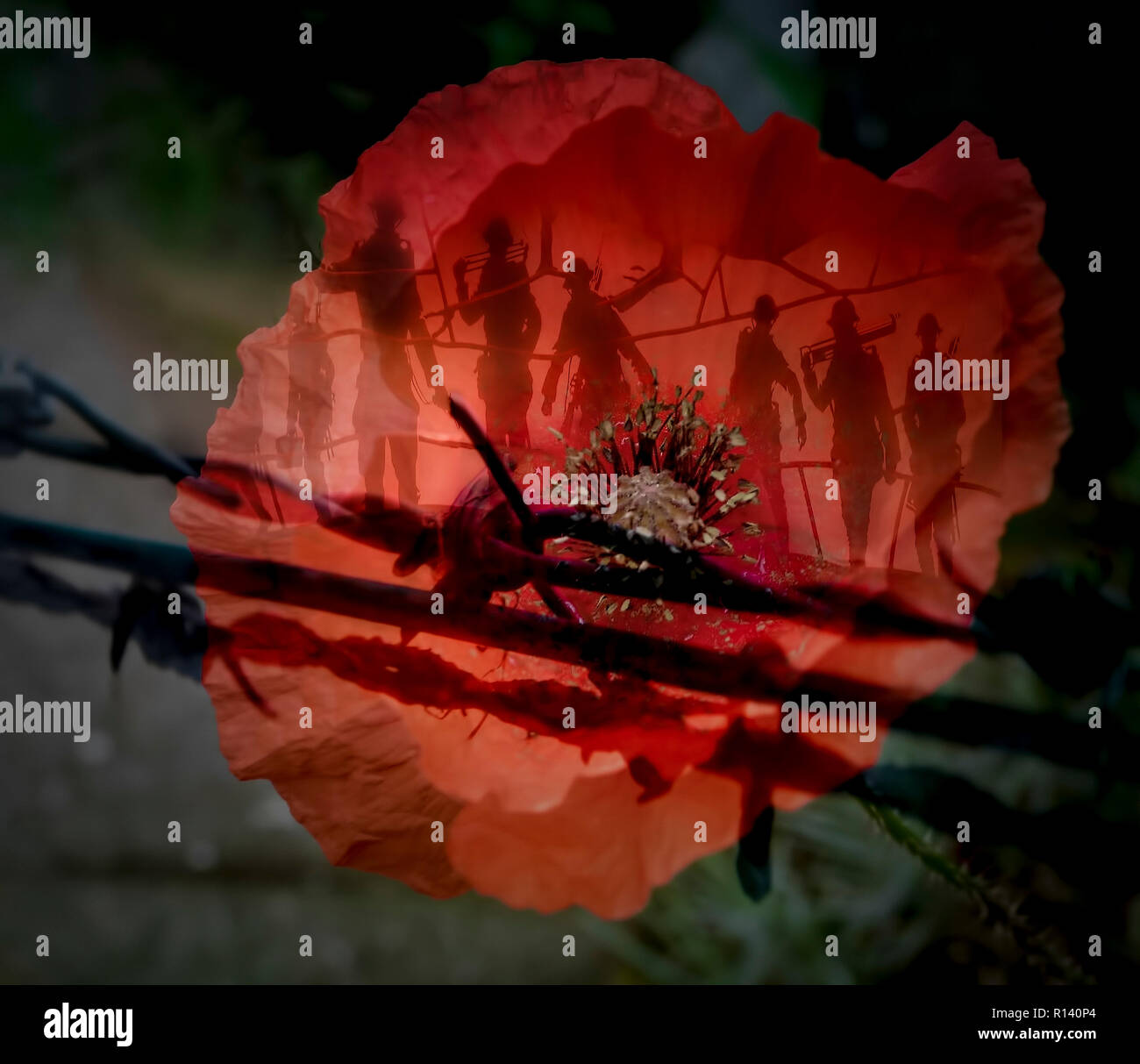 World War 1 Stock Photohttps://www.alamy.com/image-license-details/?v=1https://www.alamy.com/world-war-1-image224437868.html
World War 1 Stock Photohttps://www.alamy.com/image-license-details/?v=1https://www.alamy.com/world-war-1-image224437868.htmlRFR140P4–World War 1
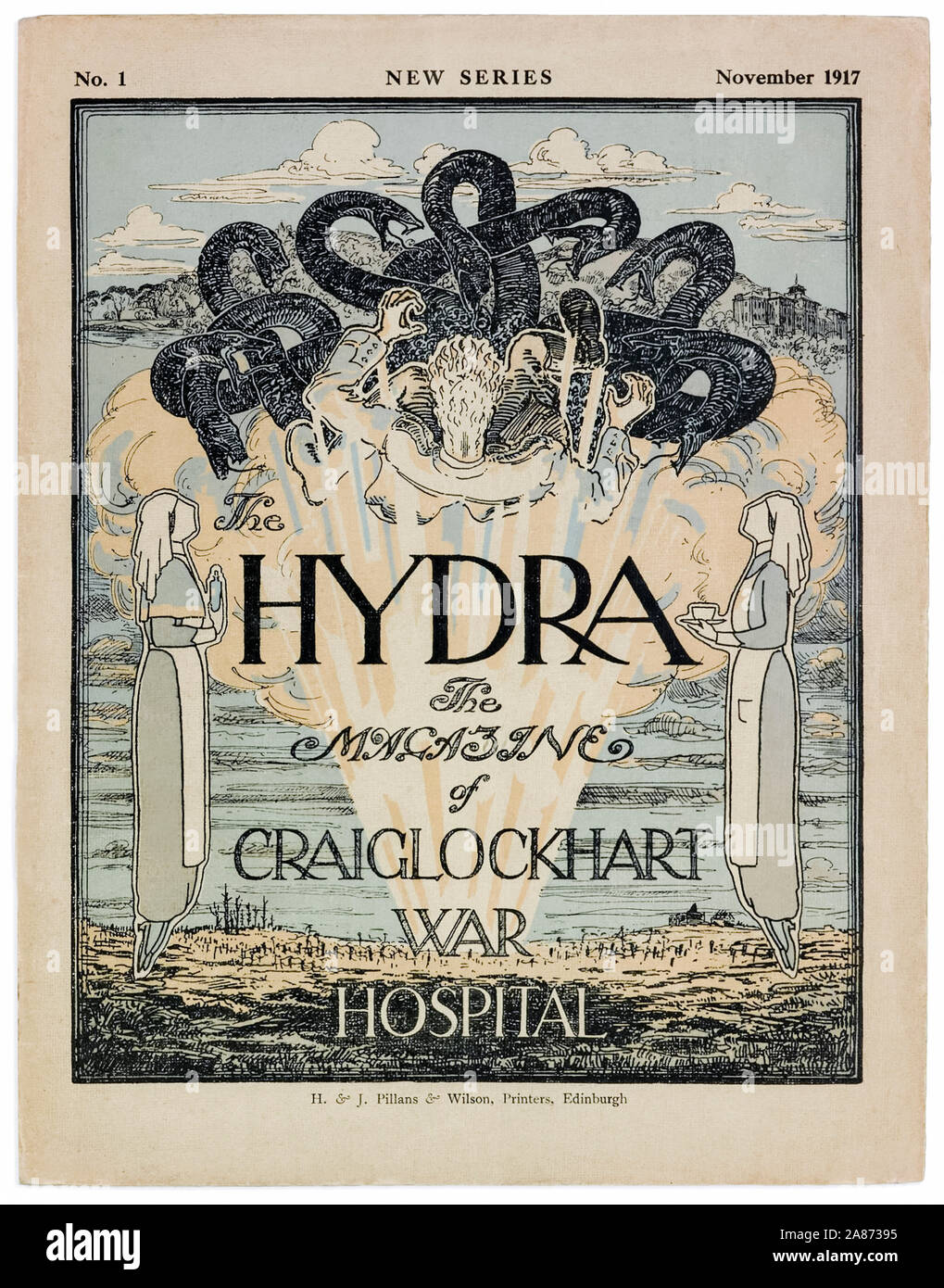 ‘The Hydra – The Magazine of Craiglockhart War Hospital’ front cover of Issue No. 1 Series 2 November 1917 featuring an illustration of a many headed serpent attacking a man flanked by 2 nurses over a battlefield. The magazine was produced by patients of ‘The Hydropathic’ hospital which was a military psychiatric hospital for the treatment of officers suffering from shell-shock between 1916-1919. Famous patients and contributors to the magazine included the war poets Siegfried Sassoon (1886-1967) and Wilfred Owen (1893-1918). Stock Photohttps://www.alamy.com/image-license-details/?v=1https://www.alamy.com/the-hydra-the-magazine-of-craiglockhart-war-hospital-front-cover-of-issue-no-1-series-2-november-1917-featuring-an-illustration-of-a-many-headed-serpent-attacking-a-man-flanked-by-2-nurses-over-a-battlefield-the-magazine-was-produced-by-patients-of-the-hydropathic-hospital-which-was-a-military-psychiatric-hospital-for-the-treatment-of-officers-suffering-from-shell-shock-between-1916-1919-famous-patients-and-contributors-to-the-magazine-included-the-war-poets-siegfried-sassoon-1886-1967-and-wilfred-owen-1893-1918-image332070513.html
‘The Hydra – The Magazine of Craiglockhart War Hospital’ front cover of Issue No. 1 Series 2 November 1917 featuring an illustration of a many headed serpent attacking a man flanked by 2 nurses over a battlefield. The magazine was produced by patients of ‘The Hydropathic’ hospital which was a military psychiatric hospital for the treatment of officers suffering from shell-shock between 1916-1919. Famous patients and contributors to the magazine included the war poets Siegfried Sassoon (1886-1967) and Wilfred Owen (1893-1918). Stock Photohttps://www.alamy.com/image-license-details/?v=1https://www.alamy.com/the-hydra-the-magazine-of-craiglockhart-war-hospital-front-cover-of-issue-no-1-series-2-november-1917-featuring-an-illustration-of-a-many-headed-serpent-attacking-a-man-flanked-by-2-nurses-over-a-battlefield-the-magazine-was-produced-by-patients-of-the-hydropathic-hospital-which-was-a-military-psychiatric-hospital-for-the-treatment-of-officers-suffering-from-shell-shock-between-1916-1919-famous-patients-and-contributors-to-the-magazine-included-the-war-poets-siegfried-sassoon-1886-1967-and-wilfred-owen-1893-1918-image332070513.htmlRM2A87395–‘The Hydra – The Magazine of Craiglockhart War Hospital’ front cover of Issue No. 1 Series 2 November 1917 featuring an illustration of a many headed serpent attacking a man flanked by 2 nurses over a battlefield. The magazine was produced by patients of ‘The Hydropathic’ hospital which was a military psychiatric hospital for the treatment of officers suffering from shell-shock between 1916-1919. Famous patients and contributors to the magazine included the war poets Siegfried Sassoon (1886-1967) and Wilfred Owen (1893-1918).
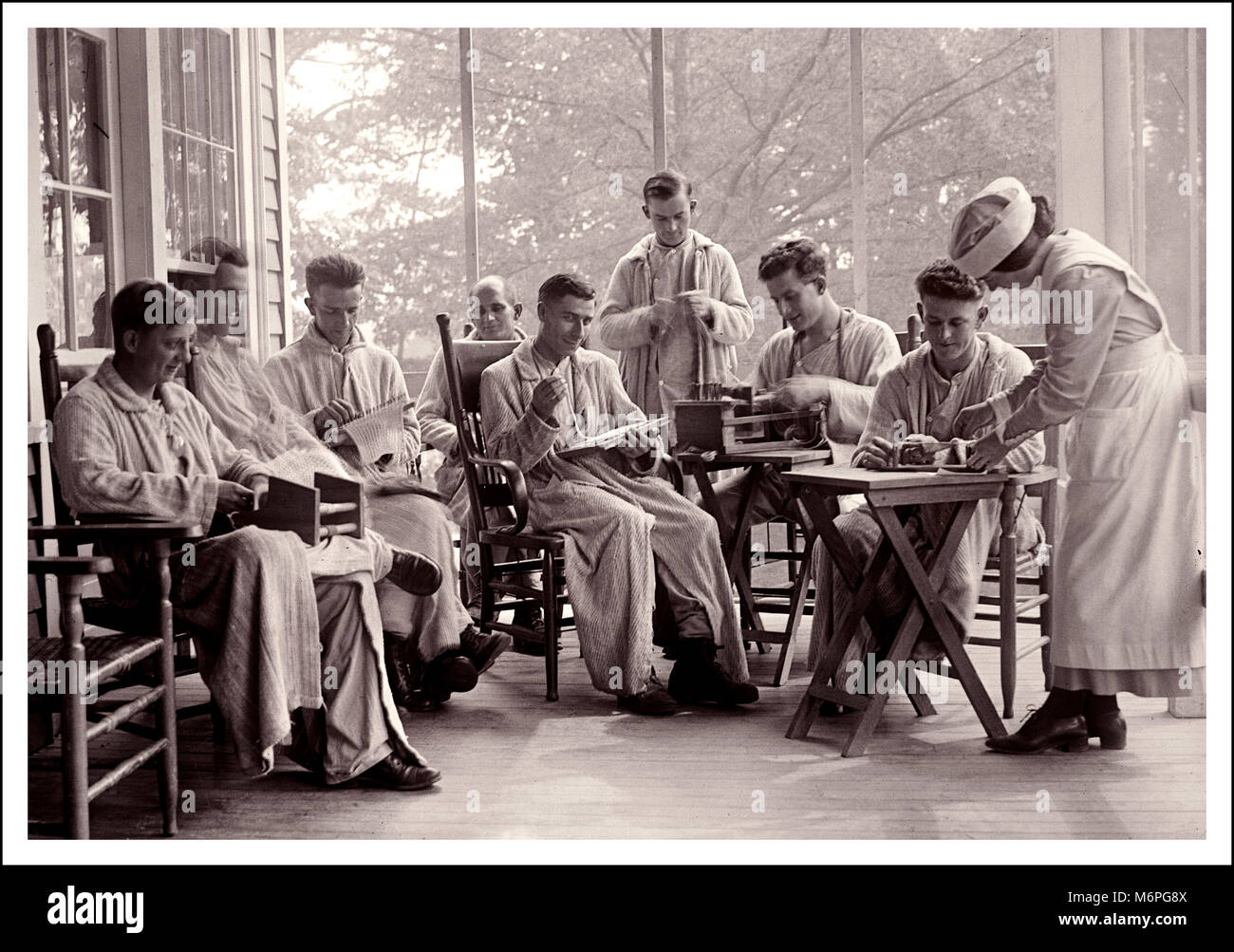 WW1 AMERICAN HOSPITAL TROOPS CARE NURSING THERAPY SHELL-SHOCK RECOVERING World War 1 propaganda well-being care image of American soldiers wounded during World War I recovering at the Walter Reed Hospital in Washington D.C USA Stock Photohttps://www.alamy.com/image-license-details/?v=1https://www.alamy.com/stock-photo-ww1-american-hospital-troops-care-nursing-therapy-shell-shock-recovering-176287354.html
WW1 AMERICAN HOSPITAL TROOPS CARE NURSING THERAPY SHELL-SHOCK RECOVERING World War 1 propaganda well-being care image of American soldiers wounded during World War I recovering at the Walter Reed Hospital in Washington D.C USA Stock Photohttps://www.alamy.com/image-license-details/?v=1https://www.alamy.com/stock-photo-ww1-american-hospital-troops-care-nursing-therapy-shell-shock-recovering-176287354.htmlRMM6PG8X–WW1 AMERICAN HOSPITAL TROOPS CARE NURSING THERAPY SHELL-SHOCK RECOVERING World War 1 propaganda well-being care image of American soldiers wounded during World War I recovering at the Walter Reed Hospital in Washington D.C USA
 Original WW1 era postcard of wounded soldiers recovering or being treated possibly for shell shock with electro therapy at Electrical Treatment Room, Crescent War Hospital, Croydon, London, Circa 1917. U.K. Stock Photohttps://www.alamy.com/image-license-details/?v=1https://www.alamy.com/original-ww1-era-postcard-of-wounded-soldiers-recovering-or-being-treated-possibly-for-shell-shock-with-electro-therapy-at-electrical-treatment-room-crescent-war-hospital-croydon-london-circa-1917-uk-image572670527.html
Original WW1 era postcard of wounded soldiers recovering or being treated possibly for shell shock with electro therapy at Electrical Treatment Room, Crescent War Hospital, Croydon, London, Circa 1917. U.K. Stock Photohttps://www.alamy.com/image-license-details/?v=1https://www.alamy.com/original-ww1-era-postcard-of-wounded-soldiers-recovering-or-being-treated-possibly-for-shell-shock-with-electro-therapy-at-electrical-treatment-room-crescent-war-hospital-croydon-london-circa-1917-uk-image572670527.htmlRM2T7KB2R–Original WW1 era postcard of wounded soldiers recovering or being treated possibly for shell shock with electro therapy at Electrical Treatment Room, Crescent War Hospital, Croydon, London, Circa 1917. U.K.
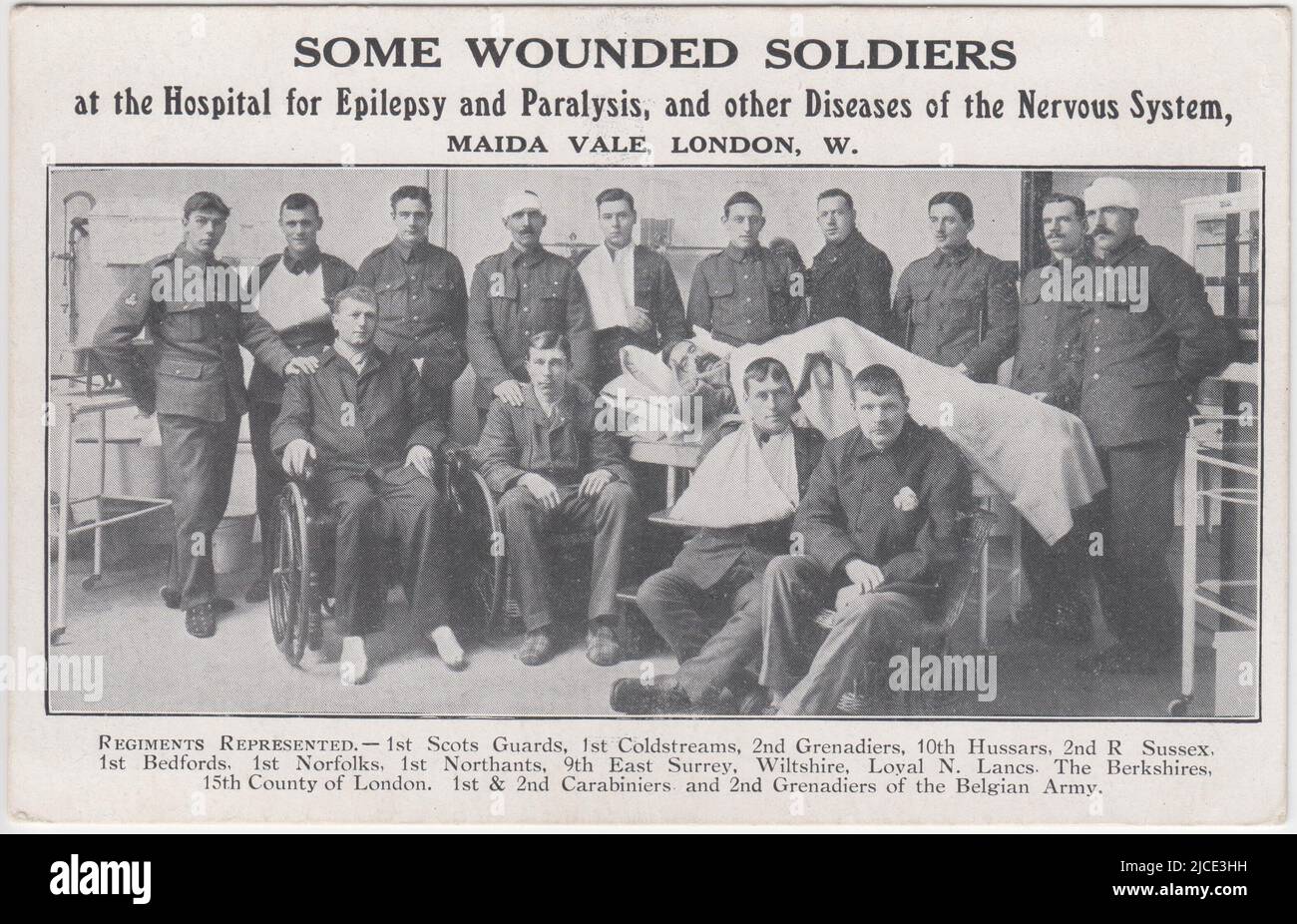 'Some Wounded Soldiers at the Hospital for Epilepsy and Paralysis, and other Diseases of the Nervous System, Maida Vale, London': group of First World War soldiers in uniform, including one man in a wheelchair, one lying in a hospital bed, and others with bandages around their arms and heads. Regiments represented include Scots Guards, Coldstream Guards, Grenadiers, 10th Hussars, Sussex, Bedfordshire, Norfolk, Northamptonshire, East Surrey, Wiltshire, Loyal North Lancashire, Berkshire & 15th County of London Regiment, Carabiniers & the Belgian army Stock Photohttps://www.alamy.com/image-license-details/?v=1https://www.alamy.com/some-wounded-soldiers-at-the-hospital-for-epilepsy-and-paralysis-and-other-diseases-of-the-nervous-system-maida-vale-london-group-of-first-world-war-soldiers-in-uniform-including-one-man-in-a-wheelchair-one-lying-in-a-hospital-bed-and-others-with-bandages-around-their-arms-and-heads-regiments-represented-include-scots-guards-coldstream-guards-grenadiers-10th-hussars-sussex-bedfordshire-norfolk-northamptonshire-east-surrey-wiltshire-loyal-north-lancashire-berkshire-15th-county-of-london-regiment-carabiniers-the-belgian-army-image472365981.html
'Some Wounded Soldiers at the Hospital for Epilepsy and Paralysis, and other Diseases of the Nervous System, Maida Vale, London': group of First World War soldiers in uniform, including one man in a wheelchair, one lying in a hospital bed, and others with bandages around their arms and heads. Regiments represented include Scots Guards, Coldstream Guards, Grenadiers, 10th Hussars, Sussex, Bedfordshire, Norfolk, Northamptonshire, East Surrey, Wiltshire, Loyal North Lancashire, Berkshire & 15th County of London Regiment, Carabiniers & the Belgian army Stock Photohttps://www.alamy.com/image-license-details/?v=1https://www.alamy.com/some-wounded-soldiers-at-the-hospital-for-epilepsy-and-paralysis-and-other-diseases-of-the-nervous-system-maida-vale-london-group-of-first-world-war-soldiers-in-uniform-including-one-man-in-a-wheelchair-one-lying-in-a-hospital-bed-and-others-with-bandages-around-their-arms-and-heads-regiments-represented-include-scots-guards-coldstream-guards-grenadiers-10th-hussars-sussex-bedfordshire-norfolk-northamptonshire-east-surrey-wiltshire-loyal-north-lancashire-berkshire-15th-county-of-london-regiment-carabiniers-the-belgian-army-image472365981.htmlRM2JCE3HH–'Some Wounded Soldiers at the Hospital for Epilepsy and Paralysis, and other Diseases of the Nervous System, Maida Vale, London': group of First World War soldiers in uniform, including one man in a wheelchair, one lying in a hospital bed, and others with bandages around their arms and heads. Regiments represented include Scots Guards, Coldstream Guards, Grenadiers, 10th Hussars, Sussex, Bedfordshire, Norfolk, Northamptonshire, East Surrey, Wiltshire, Loyal North Lancashire, Berkshire & 15th County of London Regiment, Carabiniers & the Belgian army
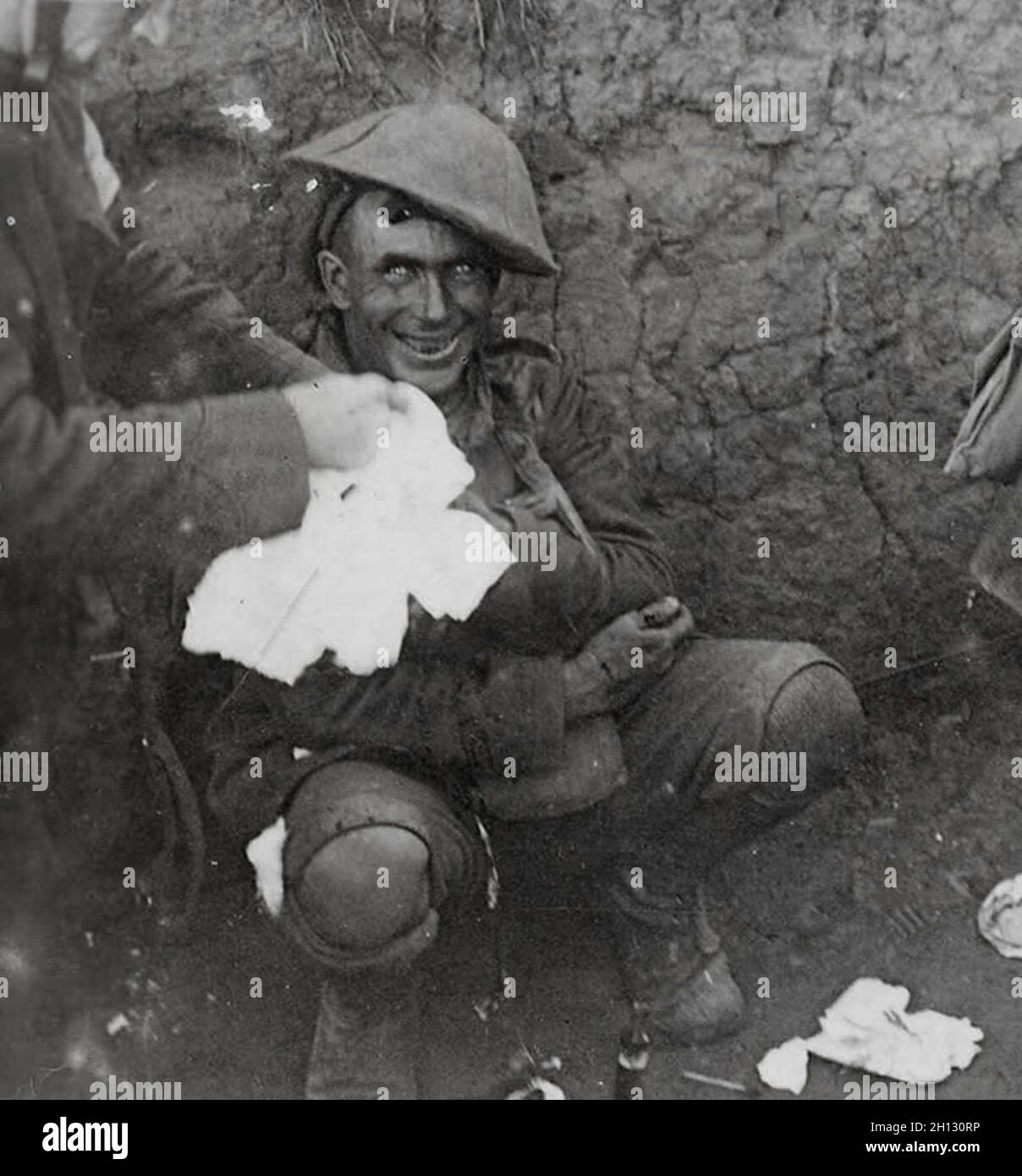 The highly distressed expression of a man suffering from shell shock during WW1. Stock Photohttps://www.alamy.com/image-license-details/?v=1https://www.alamy.com/the-highly-distressed-expression-of-a-man-suffering-from-shell-shock-during-ww1-image448150746.html
The highly distressed expression of a man suffering from shell shock during WW1. Stock Photohttps://www.alamy.com/image-license-details/?v=1https://www.alamy.com/the-highly-distressed-expression-of-a-man-suffering-from-shell-shock-during-ww1-image448150746.htmlRM2H130RP–The highly distressed expression of a man suffering from shell shock during WW1.
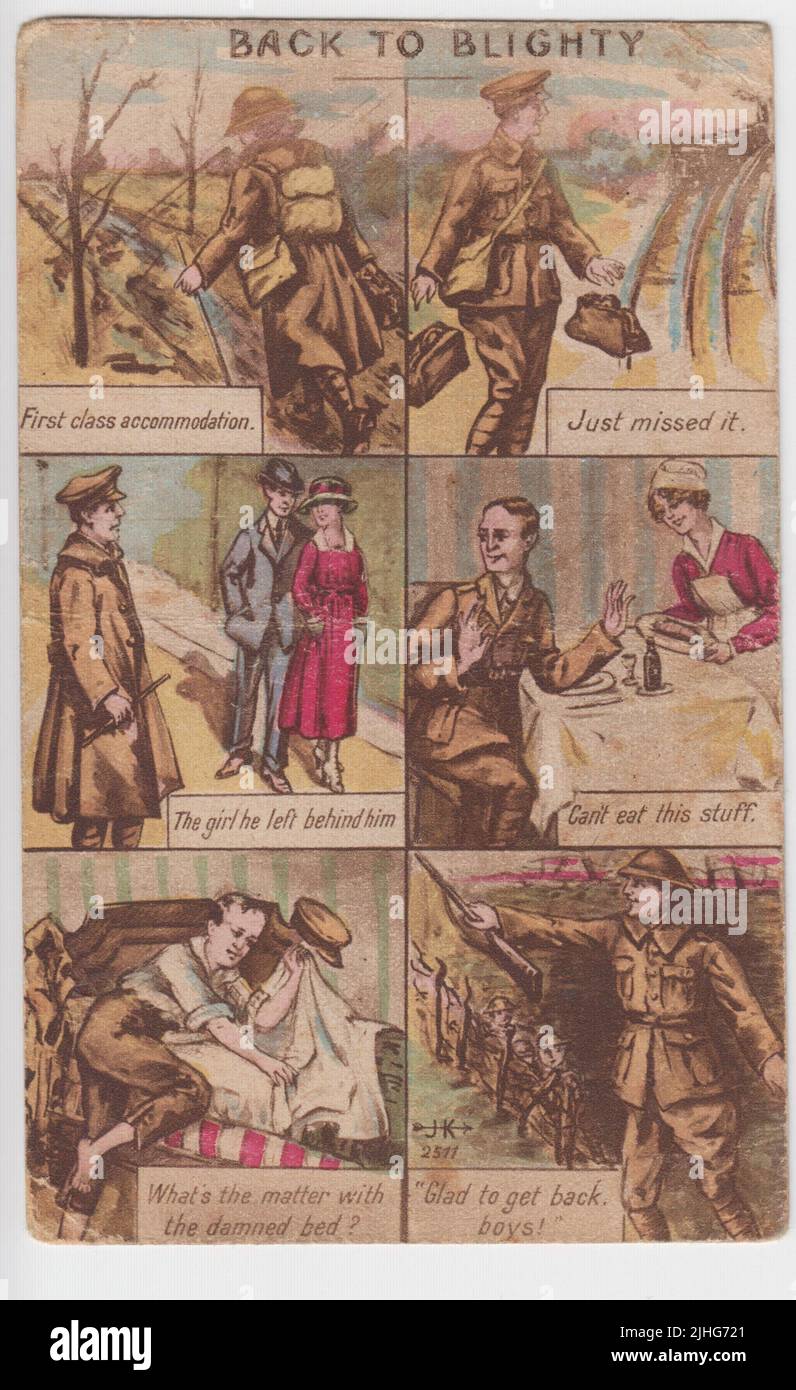 'Back to Blighty': series of 6 cartoons showing the experiences of a First World War British soldier on leave & his disconnect from civilian life when he returns home. Panel 1: 'First class accommodation' (soldier walking through shattered landscape on Western Front). Panel 2: 'Just missed it' (disappearing train). Panel 3: 'The girl he left behind' (girl with civilian lover). Panel 4: 'Can't eat this stuff' (unable to eat food). Panel 5: 'What's the matter with the damned bed?' (unable to sleep). Panel 6: 'Glad to get back, boys!' (back at the trenches). The postcard was sent in 1918 Stock Photohttps://www.alamy.com/image-license-details/?v=1https://www.alamy.com/back-to-blighty-series-of-6-cartoons-showing-the-experiences-of-a-first-world-war-british-soldier-on-leave-his-disconnect-from-civilian-life-when-he-returns-home-panel-1-first-class-accommodation-soldier-walking-through-shattered-landscape-on-western-front-panel-2-just-missed-it-disappearing-train-panel-3-the-girl-he-left-behind-girl-with-civilian-lover-panel-4-cant-eat-this-stuff-unable-to-eat-food-panel-5-whats-the-matter-with-the-damned-bed-unable-to-sleep-panel-6-glad-to-get-back-boys!-back-at-the-trenches-the-postcard-was-sent-in-1918-image475485865.html
'Back to Blighty': series of 6 cartoons showing the experiences of a First World War British soldier on leave & his disconnect from civilian life when he returns home. Panel 1: 'First class accommodation' (soldier walking through shattered landscape on Western Front). Panel 2: 'Just missed it' (disappearing train). Panel 3: 'The girl he left behind' (girl with civilian lover). Panel 4: 'Can't eat this stuff' (unable to eat food). Panel 5: 'What's the matter with the damned bed?' (unable to sleep). Panel 6: 'Glad to get back, boys!' (back at the trenches). The postcard was sent in 1918 Stock Photohttps://www.alamy.com/image-license-details/?v=1https://www.alamy.com/back-to-blighty-series-of-6-cartoons-showing-the-experiences-of-a-first-world-war-british-soldier-on-leave-his-disconnect-from-civilian-life-when-he-returns-home-panel-1-first-class-accommodation-soldier-walking-through-shattered-landscape-on-western-front-panel-2-just-missed-it-disappearing-train-panel-3-the-girl-he-left-behind-girl-with-civilian-lover-panel-4-cant-eat-this-stuff-unable-to-eat-food-panel-5-whats-the-matter-with-the-damned-bed-unable-to-sleep-panel-6-glad-to-get-back-boys!-back-at-the-trenches-the-postcard-was-sent-in-1918-image475485865.htmlRM2JHG721–'Back to Blighty': series of 6 cartoons showing the experiences of a First World War British soldier on leave & his disconnect from civilian life when he returns home. Panel 1: 'First class accommodation' (soldier walking through shattered landscape on Western Front). Panel 2: 'Just missed it' (disappearing train). Panel 3: 'The girl he left behind' (girl with civilian lover). Panel 4: 'Can't eat this stuff' (unable to eat food). Panel 5: 'What's the matter with the damned bed?' (unable to sleep). Panel 6: 'Glad to get back, boys!' (back at the trenches). The postcard was sent in 1918
 WWI British troops in flooded shell holes (or mine craters)on the front line aka Western Front. Stock Photohttps://www.alamy.com/image-license-details/?v=1https://www.alamy.com/wwi-british-troops-in-flooded-shell-holes-or-mine-craterson-the-front-line-aka-western-front-image367434267.html
WWI British troops in flooded shell holes (or mine craters)on the front line aka Western Front. Stock Photohttps://www.alamy.com/image-license-details/?v=1https://www.alamy.com/wwi-british-troops-in-flooded-shell-holes-or-mine-craterson-the-front-line-aka-western-front-image367434267.htmlRM2C9P24B–WWI British troops in flooded shell holes (or mine craters)on the front line aka Western Front.
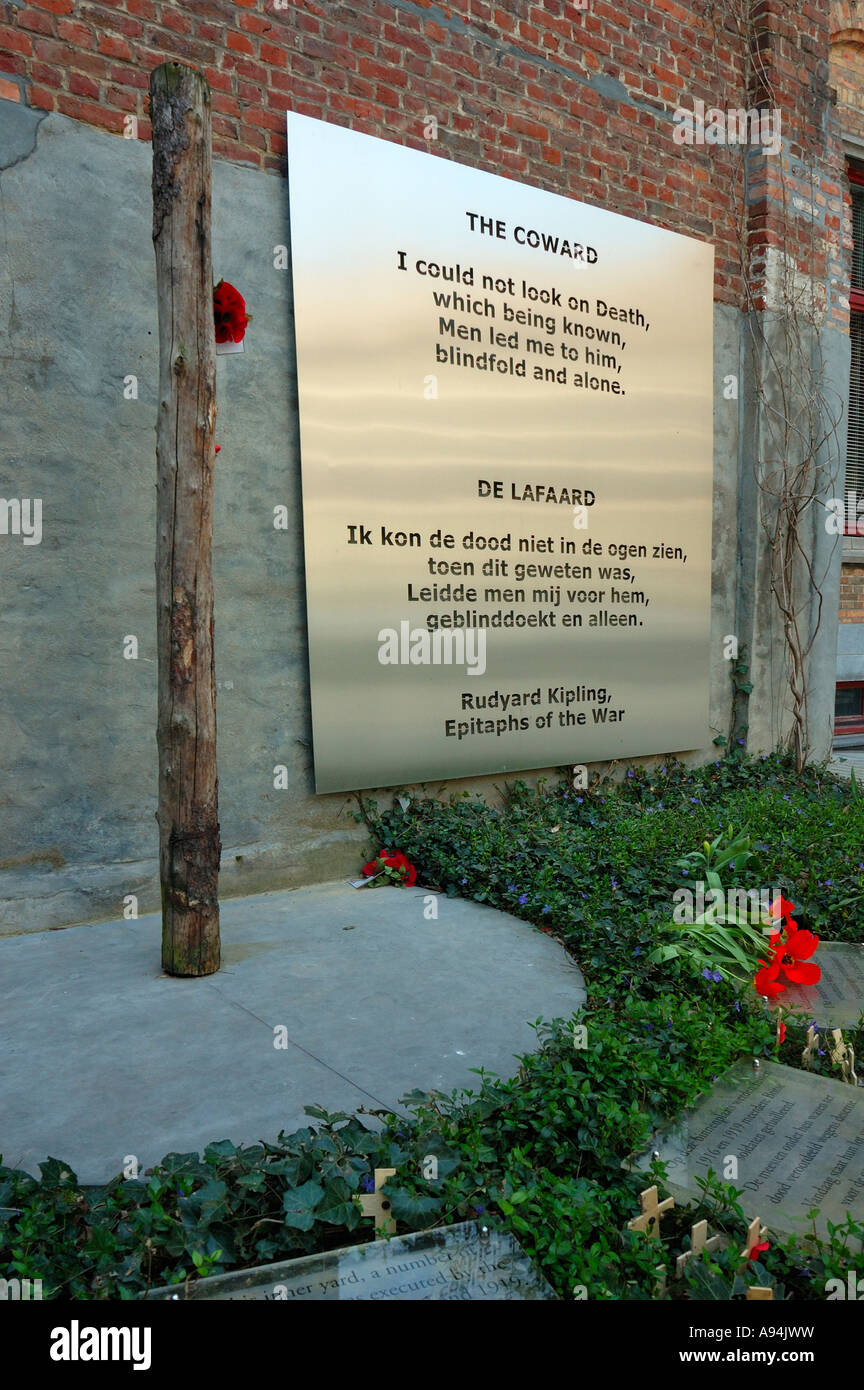 Execution post Stock Photohttps://www.alamy.com/image-license-details/?v=1https://www.alamy.com/stock-photo-execution-post-12249300.html
Execution post Stock Photohttps://www.alamy.com/image-license-details/?v=1https://www.alamy.com/stock-photo-execution-post-12249300.htmlRMA94JWW–Execution post
 Multiple horse casualties resulting from German shell fire during World War One. One horse on the right died from shell shock, while the other was hit by a shell. The photo shows a severely wounded driver from the 120th Machine Gun Battalion, Co. C, near Gildwiller, Alsace, Germany. This image was passed by the A.E.F. censor. Photographer and date not provided. Stock Photohttps://www.alamy.com/image-license-details/?v=1https://www.alamy.com/multiple-horse-casualties-resulting-from-german-shell-fire-during-world-war-one-one-horse-on-the-right-died-from-shell-shock-while-the-other-was-hit-by-a-shell-the-photo-shows-a-severely-wounded-driver-from-the-120th-machine-gun-battalion-co-c-near-gildwiller-alsace-germany-this-image-was-passed-by-the-aef-censor-photographer-and-date-not-provided-image558569487.html
Multiple horse casualties resulting from German shell fire during World War One. One horse on the right died from shell shock, while the other was hit by a shell. The photo shows a severely wounded driver from the 120th Machine Gun Battalion, Co. C, near Gildwiller, Alsace, Germany. This image was passed by the A.E.F. censor. Photographer and date not provided. Stock Photohttps://www.alamy.com/image-license-details/?v=1https://www.alamy.com/multiple-horse-casualties-resulting-from-german-shell-fire-during-world-war-one-one-horse-on-the-right-died-from-shell-shock-while-the-other-was-hit-by-a-shell-the-photo-shows-a-severely-wounded-driver-from-the-120th-machine-gun-battalion-co-c-near-gildwiller-alsace-germany-this-image-was-passed-by-the-aef-censor-photographer-and-date-not-provided-image558569487.htmlRM2RCN127–Multiple horse casualties resulting from German shell fire during World War One. One horse on the right died from shell shock, while the other was hit by a shell. The photo shows a severely wounded driver from the 120th Machine Gun Battalion, Co. C, near Gildwiller, Alsace, Germany. This image was passed by the A.E.F. censor. Photographer and date not provided.
 . 4 Battalion (attached 1 Battalion), Gordon Highlanders Lt Scott enlisted in September 1914, shortly after the outbreak of war. He was posted to the Western Front in February 1915 and became a victim of shell shock in June of that year. Lt Scott was wounded again at Hooge on 25 September 1915 but recovered and continued to serve until he was killed in action, aged 23, at Wancourt on 9 April 1917. Lt Scott is buried at Feuchy Chapel British Cemetery, Wancourt. Faces of the First World War Find out more about this First World War Centenary project at www.1914.org/faces. This image is from IWM C Stock Photohttps://www.alamy.com/image-license-details/?v=1https://www.alamy.com/4-battalion-attached-1-battalion-gordon-highlanders-lt-scott-enlisted-in-september-1914-shortly-after-the-outbreak-of-war-he-was-posted-to-the-western-front-in-february-1915-and-became-a-victim-of-shell-shock-in-june-of-that-year-lt-scott-was-wounded-again-at-hooge-on-25-september-1915-but-recovered-and-continued-to-serve-until-he-was-killed-in-action-aged-23-at-wancourt-on-9-april-1917-lt-scott-is-buried-at-feuchy-chapel-british-cemetery-wancourt-faces-of-the-first-world-war-find-out-more-about-this-first-world-war-centenary-project-at-www1914orgfaces-this-image-is-from-iwm-c-image568900734.html
. 4 Battalion (attached 1 Battalion), Gordon Highlanders Lt Scott enlisted in September 1914, shortly after the outbreak of war. He was posted to the Western Front in February 1915 and became a victim of shell shock in June of that year. Lt Scott was wounded again at Hooge on 25 September 1915 but recovered and continued to serve until he was killed in action, aged 23, at Wancourt on 9 April 1917. Lt Scott is buried at Feuchy Chapel British Cemetery, Wancourt. Faces of the First World War Find out more about this First World War Centenary project at www.1914.org/faces. This image is from IWM C Stock Photohttps://www.alamy.com/image-license-details/?v=1https://www.alamy.com/4-battalion-attached-1-battalion-gordon-highlanders-lt-scott-enlisted-in-september-1914-shortly-after-the-outbreak-of-war-he-was-posted-to-the-western-front-in-february-1915-and-became-a-victim-of-shell-shock-in-june-of-that-year-lt-scott-was-wounded-again-at-hooge-on-25-september-1915-but-recovered-and-continued-to-serve-until-he-was-killed-in-action-aged-23-at-wancourt-on-9-april-1917-lt-scott-is-buried-at-feuchy-chapel-british-cemetery-wancourt-faces-of-the-first-world-war-find-out-more-about-this-first-world-war-centenary-project-at-www1914orgfaces-this-image-is-from-iwm-c-image568900734.htmlRM2T1FJKA–. 4 Battalion (attached 1 Battalion), Gordon Highlanders Lt Scott enlisted in September 1914, shortly after the outbreak of war. He was posted to the Western Front in February 1915 and became a victim of shell shock in June of that year. Lt Scott was wounded again at Hooge on 25 September 1915 but recovered and continued to serve until he was killed in action, aged 23, at Wancourt on 9 April 1917. Lt Scott is buried at Feuchy Chapel British Cemetery, Wancourt. Faces of the First World War Find out more about this First World War Centenary project at www.1914.org/faces. This image is from IWM C
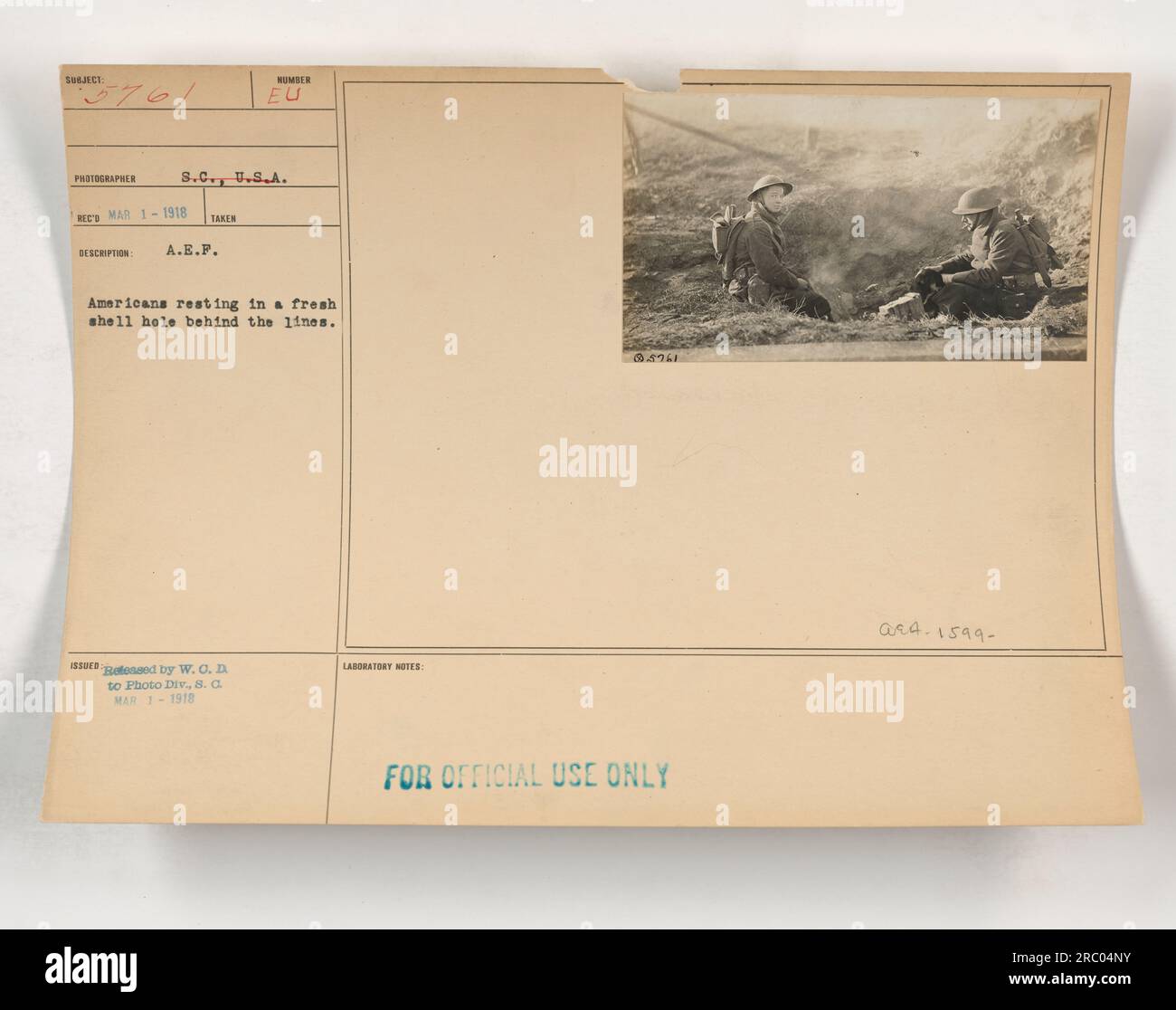 American soldiers taking a break in a newly-formed shell hole behind the lines during World War One. Photo taken by photographer S.C., U.S.A., and issued to the Photo Division. Official use only. Date of receipt: March 1, 1918. Lab notes reference: @5761. Stock Photohttps://www.alamy.com/image-license-details/?v=1https://www.alamy.com/american-soldiers-taking-a-break-in-a-newly-formed-shell-hole-behind-the-lines-during-world-war-one-photo-taken-by-photographer-sc-usa-and-issued-to-the-photo-division-official-use-only-date-of-receipt-march-1-1918-lab-notes-reference-@5761-image558111399.html
American soldiers taking a break in a newly-formed shell hole behind the lines during World War One. Photo taken by photographer S.C., U.S.A., and issued to the Photo Division. Official use only. Date of receipt: March 1, 1918. Lab notes reference: @5761. Stock Photohttps://www.alamy.com/image-license-details/?v=1https://www.alamy.com/american-soldiers-taking-a-break-in-a-newly-formed-shell-hole-behind-the-lines-during-world-war-one-photo-taken-by-photographer-sc-usa-and-issued-to-the-photo-division-official-use-only-date-of-receipt-march-1-1918-lab-notes-reference-@5761-image558111399.htmlRM2RC04NY–American soldiers taking a break in a newly-formed shell hole behind the lines during World War One. Photo taken by photographer S.C., U.S.A., and issued to the Photo Division. Official use only. Date of receipt: March 1, 1918. Lab notes reference: @5761.
 Edinburgh, Scotland, Great Britain. 2nd Oct, 2023. 20231002: The former entrance to the historic Craiglockhart Hydropathic is seen in Edinburgh, Scotland, Great Britain. During the First World War, Craiglockhart served as a hospital that served British officers suffering from shell shock. (Credit Image: © Chuck Myers/ZUMA Press Wire) EDITORIAL USAGE ONLY! Not for Commercial USAGE! Stock Photohttps://www.alamy.com/image-license-details/?v=1https://www.alamy.com/edinburgh-scotland-great-britain-2nd-oct-2023-20231002-the-former-entrance-to-the-historic-craiglockhart-hydropathic-is-seen-in-edinburgh-scotland-great-britain-during-the-first-world-war-craiglockhart-served-as-a-hospital-that-served-british-officers-suffering-from-shell-shock-credit-image-chuck-myerszuma-press-wire-editorial-usage-only!-not-for-commercial-usage!-image569956731.html
Edinburgh, Scotland, Great Britain. 2nd Oct, 2023. 20231002: The former entrance to the historic Craiglockhart Hydropathic is seen in Edinburgh, Scotland, Great Britain. During the First World War, Craiglockhart served as a hospital that served British officers suffering from shell shock. (Credit Image: © Chuck Myers/ZUMA Press Wire) EDITORIAL USAGE ONLY! Not for Commercial USAGE! Stock Photohttps://www.alamy.com/image-license-details/?v=1https://www.alamy.com/edinburgh-scotland-great-britain-2nd-oct-2023-20231002-the-former-entrance-to-the-historic-craiglockhart-hydropathic-is-seen-in-edinburgh-scotland-great-britain-during-the-first-world-war-craiglockhart-served-as-a-hospital-that-served-british-officers-suffering-from-shell-shock-credit-image-chuck-myerszuma-press-wire-editorial-usage-only!-not-for-commercial-usage!-image569956731.htmlRM2T37NHF–Edinburgh, Scotland, Great Britain. 2nd Oct, 2023. 20231002: The former entrance to the historic Craiglockhart Hydropathic is seen in Edinburgh, Scotland, Great Britain. During the First World War, Craiglockhart served as a hospital that served British officers suffering from shell shock. (Credit Image: © Chuck Myers/ZUMA Press Wire) EDITORIAL USAGE ONLY! Not for Commercial USAGE!
 American Harvesting Machine passing shell hole in a wheat field near Belleau Wood, France during World War One. The photograph, taken on August 29, 1918, features Sgt. Charles E. Mace. This image was released by the A.E.F. Censor and the exact date is unknown. Stock Photohttps://www.alamy.com/image-license-details/?v=1https://www.alamy.com/american-harvesting-machine-passing-shell-hole-in-a-wheat-field-near-belleau-wood-france-during-world-war-one-the-photograph-taken-on-august-29-1918-features-sgt-charles-e-mace-this-image-was-released-by-the-aef-censor-and-the-exact-date-is-unknown-image558132530.html
American Harvesting Machine passing shell hole in a wheat field near Belleau Wood, France during World War One. The photograph, taken on August 29, 1918, features Sgt. Charles E. Mace. This image was released by the A.E.F. Censor and the exact date is unknown. Stock Photohttps://www.alamy.com/image-license-details/?v=1https://www.alamy.com/american-harvesting-machine-passing-shell-hole-in-a-wheat-field-near-belleau-wood-france-during-world-war-one-the-photograph-taken-on-august-29-1918-features-sgt-charles-e-mace-this-image-was-released-by-the-aef-censor-and-the-exact-date-is-unknown-image558132530.htmlRM2RC13MJ–American Harvesting Machine passing shell hole in a wheat field near Belleau Wood, France during World War One. The photograph, taken on August 29, 1918, features Sgt. Charles E. Mace. This image was released by the A.E.F. Censor and the exact date is unknown.
 Distinuished neurologist Sir Frederick W Mott 1926 Stock Photohttps://www.alamy.com/image-license-details/?v=1https://www.alamy.com/distinuished-neurologist-sir-frederick-w-mott-1926-image623894561.html
Distinuished neurologist Sir Frederick W Mott 1926 Stock Photohttps://www.alamy.com/image-license-details/?v=1https://www.alamy.com/distinuished-neurologist-sir-frederick-w-mott-1926-image623894561.htmlRM2Y70RTH–Distinuished neurologist Sir Frederick W Mott 1926
 American Holt tractor destroyed by a German shell in Epinouville, France during World War One. The photograph, taken on October 5, 1918, shows the wreckage caused by the direct hit. The image was received on November 4, 1918, with no specific date given for when it was approved by the A.E.F. censor. Stock Photohttps://www.alamy.com/image-license-details/?v=1https://www.alamy.com/american-holt-tractor-destroyed-by-a-german-shell-in-epinouville-france-during-world-war-one-the-photograph-taken-on-october-5-1918-shows-the-wreckage-caused-by-the-direct-hit-the-image-was-received-on-november-4-1918-with-no-specific-date-given-for-when-it-was-approved-by-the-aef-censor-image558305527.html
American Holt tractor destroyed by a German shell in Epinouville, France during World War One. The photograph, taken on October 5, 1918, shows the wreckage caused by the direct hit. The image was received on November 4, 1918, with no specific date given for when it was approved by the A.E.F. censor. Stock Photohttps://www.alamy.com/image-license-details/?v=1https://www.alamy.com/american-holt-tractor-destroyed-by-a-german-shell-in-epinouville-france-during-world-war-one-the-photograph-taken-on-october-5-1918-shows-the-wreckage-caused-by-the-direct-hit-the-image-was-received-on-november-4-1918-with-no-specific-date-given-for-when-it-was-approved-by-the-aef-censor-image558305527.htmlRM2RC90B3–American Holt tractor destroyed by a German shell in Epinouville, France during World War One. The photograph, taken on October 5, 1918, shows the wreckage caused by the direct hit. The image was received on November 4, 1918, with no specific date given for when it was approved by the A.E.F. censor.
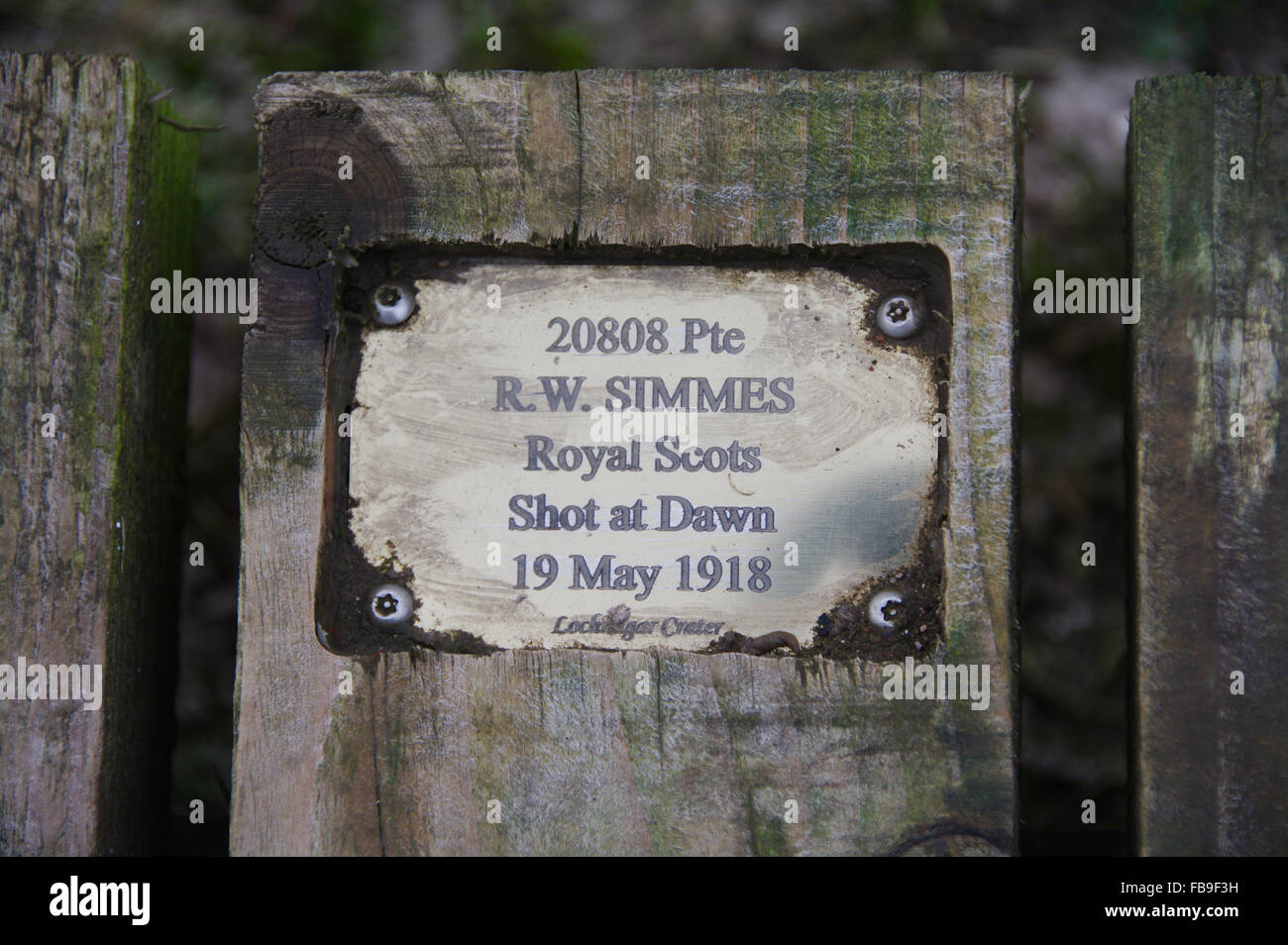 Shot at Dawn for desertion - World War 1 solider on the Western Front 1918 on the Somme, Western France. RW Simmes Royal Scots Stock Photohttps://www.alamy.com/image-license-details/?v=1https://www.alamy.com/stock-photo-shot-at-dawn-for-desertion-world-war-1-solider-on-the-western-front-93022485.html
Shot at Dawn for desertion - World War 1 solider on the Western Front 1918 on the Somme, Western France. RW Simmes Royal Scots Stock Photohttps://www.alamy.com/image-license-details/?v=1https://www.alamy.com/stock-photo-shot-at-dawn-for-desertion-world-war-1-solider-on-the-western-front-93022485.htmlRFFB9F3H–Shot at Dawn for desertion - World War 1 solider on the Western Front 1918 on the Somme, Western France. RW Simmes Royal Scots
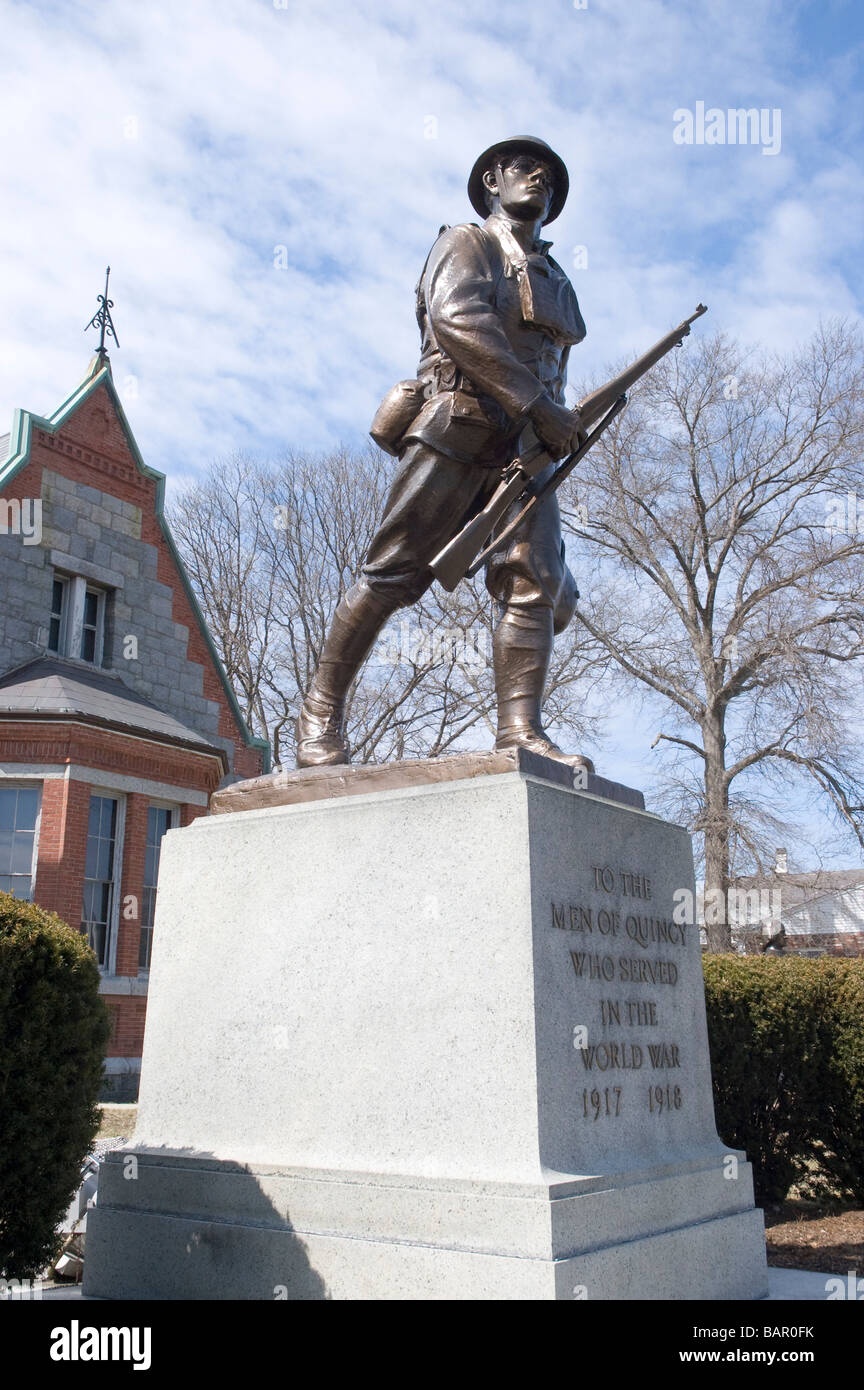 The since relocated monument to the men of quincy massachusetts who served in world war 1, then known as the great war Stock Photohttps://www.alamy.com/image-license-details/?v=1https://www.alamy.com/stock-photo-the-since-relocated-monument-to-the-men-of-quincy-massachusetts-who-23862263.html
The since relocated monument to the men of quincy massachusetts who served in world war 1, then known as the great war Stock Photohttps://www.alamy.com/image-license-details/?v=1https://www.alamy.com/stock-photo-the-since-relocated-monument-to-the-men-of-quincy-massachusetts-who-23862263.htmlRMBAR0FK–The since relocated monument to the men of quincy massachusetts who served in world war 1, then known as the great war
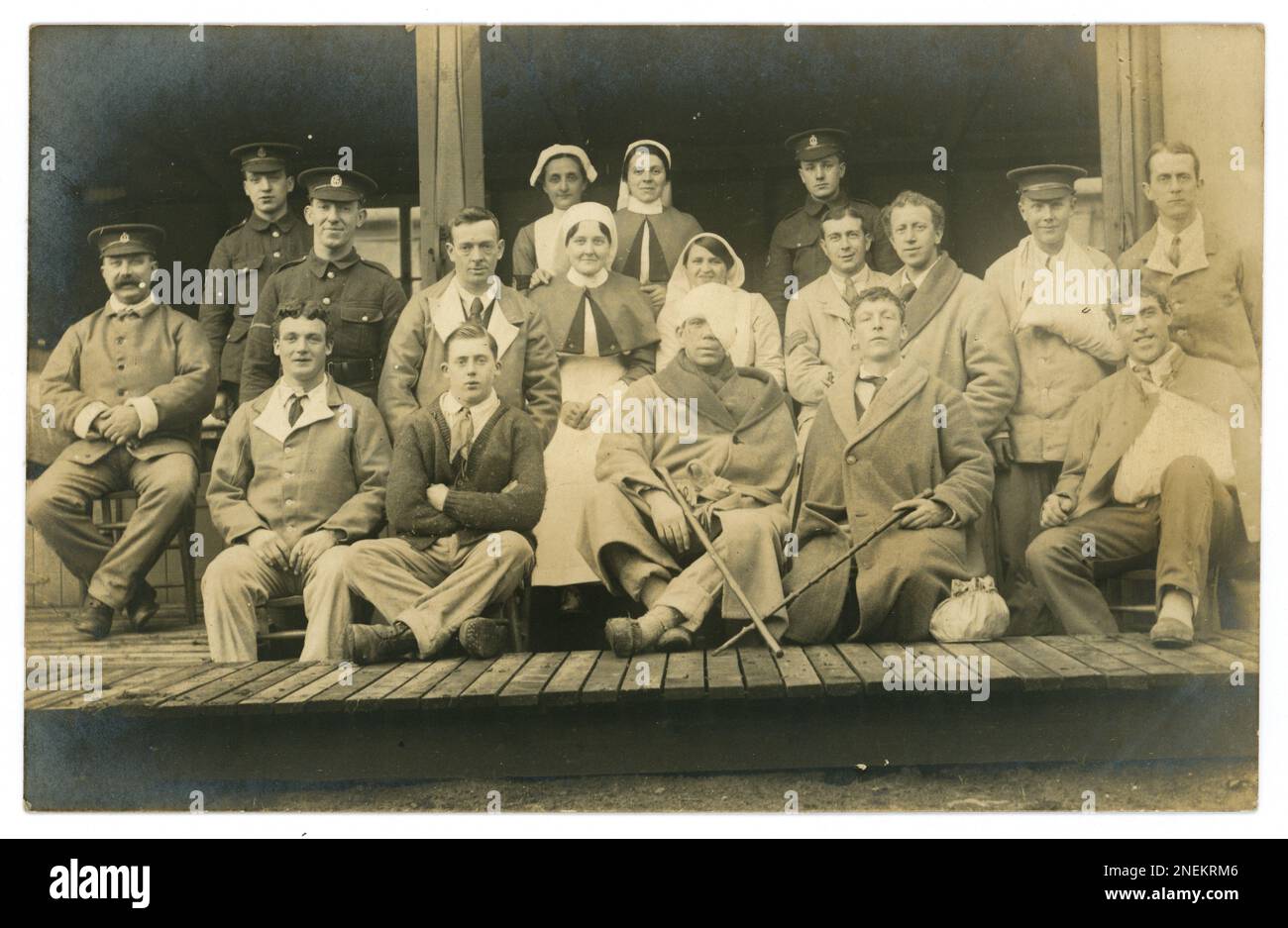 Original WW1 postcard of British wounded convalescent soldiers some with bandages, one has an eye & head wound, others may have shell shock / PTSD. Some wearing blue hospital 'blues' uniforms, others overcoats, outside a Field Hospital, a medical facility behind the front lines, or base hospital at the rear in France maybe, or a 'reserve' hospital back in the U.K. A soldier of the York and Lancaster Regiment stands in the middle of the group, perhaps these men are from his regiment. There are several Royal Army Medical Corps privates in attendance together with staff nurses, Circa 1915-1918. Stock Photohttps://www.alamy.com/image-license-details/?v=1https://www.alamy.com/original-ww1-postcard-of-british-wounded-convalescent-soldiers-some-with-bandages-one-has-an-eye-head-wound-others-may-have-shell-shock-ptsd-some-wearing-blue-hospital-blues-uniforms-others-overcoats-outside-a-field-hospital-a-medical-facility-behind-the-front-lines-or-base-hospital-at-the-rear-in-france-maybe-or-a-reserve-hospital-back-in-the-uk-a-soldier-of-the-york-and-lancaster-regiment-stands-in-the-middle-of-the-group-perhaps-these-men-are-from-his-regiment-there-are-several-royal-army-medical-corps-privates-in-attendance-together-with-staff-nurses-circa-1915-1918-image525351910.html
Original WW1 postcard of British wounded convalescent soldiers some with bandages, one has an eye & head wound, others may have shell shock / PTSD. Some wearing blue hospital 'blues' uniforms, others overcoats, outside a Field Hospital, a medical facility behind the front lines, or base hospital at the rear in France maybe, or a 'reserve' hospital back in the U.K. A soldier of the York and Lancaster Regiment stands in the middle of the group, perhaps these men are from his regiment. There are several Royal Army Medical Corps privates in attendance together with staff nurses, Circa 1915-1918. Stock Photohttps://www.alamy.com/image-license-details/?v=1https://www.alamy.com/original-ww1-postcard-of-british-wounded-convalescent-soldiers-some-with-bandages-one-has-an-eye-head-wound-others-may-have-shell-shock-ptsd-some-wearing-blue-hospital-blues-uniforms-others-overcoats-outside-a-field-hospital-a-medical-facility-behind-the-front-lines-or-base-hospital-at-the-rear-in-france-maybe-or-a-reserve-hospital-back-in-the-uk-a-soldier-of-the-york-and-lancaster-regiment-stands-in-the-middle-of-the-group-perhaps-these-men-are-from-his-regiment-there-are-several-royal-army-medical-corps-privates-in-attendance-together-with-staff-nurses-circa-1915-1918-image525351910.htmlRM2NEKRM6–Original WW1 postcard of British wounded convalescent soldiers some with bandages, one has an eye & head wound, others may have shell shock / PTSD. Some wearing blue hospital 'blues' uniforms, others overcoats, outside a Field Hospital, a medical facility behind the front lines, or base hospital at the rear in France maybe, or a 'reserve' hospital back in the U.K. A soldier of the York and Lancaster Regiment stands in the middle of the group, perhaps these men are from his regiment. There are several Royal Army Medical Corps privates in attendance together with staff nurses, Circa 1915-1918.
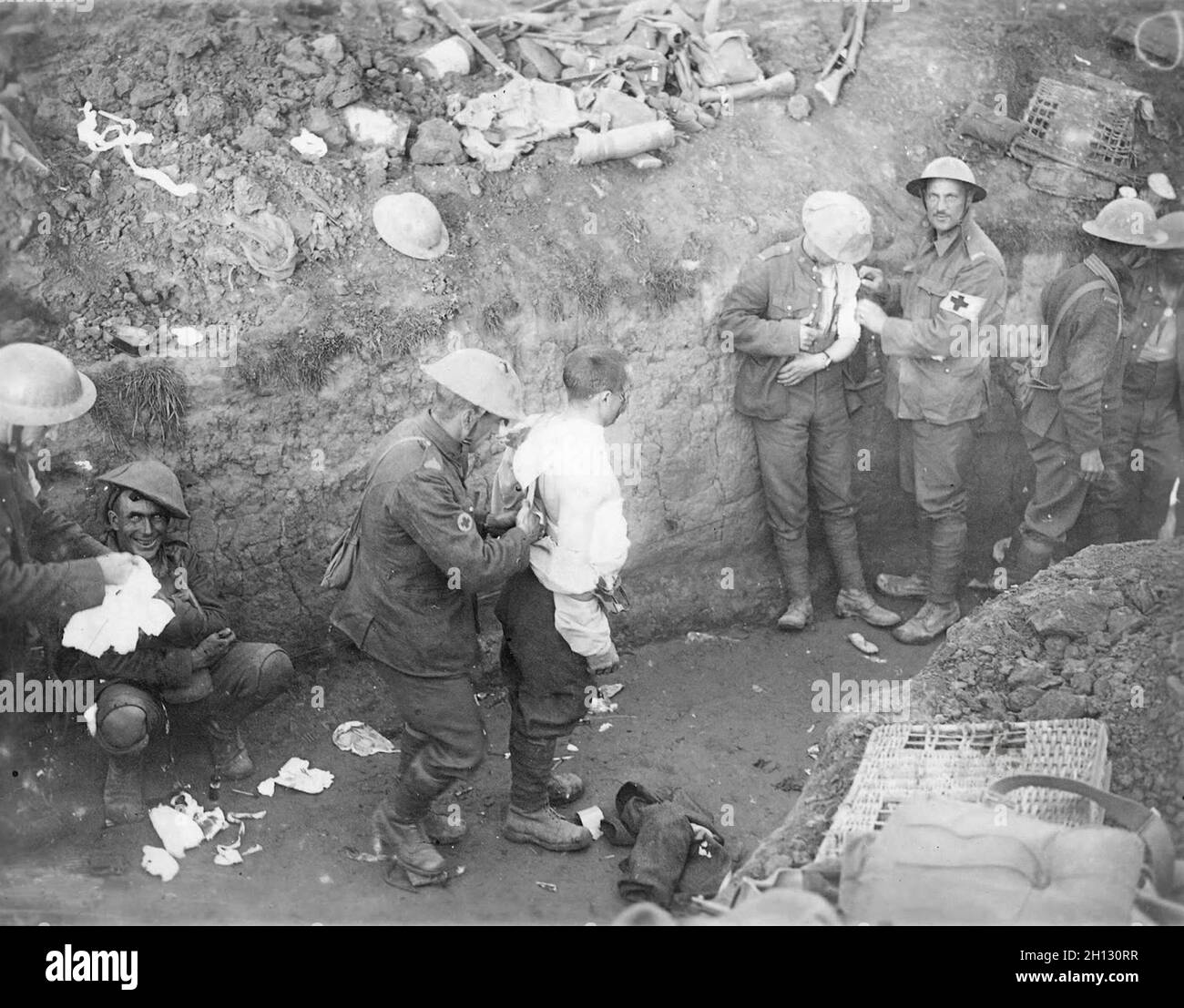 Wounded men beaing treated in a trench in WW1. The man on the left is suffering from shell shock. Stock Photohttps://www.alamy.com/image-license-details/?v=1https://www.alamy.com/wounded-men-beaing-treated-in-a-trench-in-ww1-the-man-on-the-left-is-suffering-from-shell-shock-image448150747.html
Wounded men beaing treated in a trench in WW1. The man on the left is suffering from shell shock. Stock Photohttps://www.alamy.com/image-license-details/?v=1https://www.alamy.com/wounded-men-beaing-treated-in-a-trench-in-ww1-the-man-on-the-left-is-suffering-from-shell-shock-image448150747.htmlRM2H130RR–Wounded men beaing treated in a trench in WW1. The man on the left is suffering from shell shock.
 Edinburgh, Scotland, Great Britain. 2nd Oct, 2023. 20231002: The former front entrance to the historic Craiglockhart Hydropathic is seen in Edinburgh, Scotland, Great Britain. During the First World War, Craiglockhart served as a hospital for British officers suffering from shell shock. (Credit Image: © Chuck Myers/ZUMA Press Wire) EDITORIAL USAGE ONLY! Not for Commercial USAGE! Stock Photohttps://www.alamy.com/image-license-details/?v=1https://www.alamy.com/edinburgh-scotland-great-britain-2nd-oct-2023-20231002-the-former-front-entrance-to-the-historic-craiglockhart-hydropathic-is-seen-in-edinburgh-scotland-great-britain-during-the-first-world-war-craiglockhart-served-as-a-hospital-for-british-officers-suffering-from-shell-shock-credit-image-chuck-myerszuma-press-wire-editorial-usage-only!-not-for-commercial-usage!-image569956723.html
Edinburgh, Scotland, Great Britain. 2nd Oct, 2023. 20231002: The former front entrance to the historic Craiglockhart Hydropathic is seen in Edinburgh, Scotland, Great Britain. During the First World War, Craiglockhart served as a hospital for British officers suffering from shell shock. (Credit Image: © Chuck Myers/ZUMA Press Wire) EDITORIAL USAGE ONLY! Not for Commercial USAGE! Stock Photohttps://www.alamy.com/image-license-details/?v=1https://www.alamy.com/edinburgh-scotland-great-britain-2nd-oct-2023-20231002-the-former-front-entrance-to-the-historic-craiglockhart-hydropathic-is-seen-in-edinburgh-scotland-great-britain-during-the-first-world-war-craiglockhart-served-as-a-hospital-for-british-officers-suffering-from-shell-shock-credit-image-chuck-myerszuma-press-wire-editorial-usage-only!-not-for-commercial-usage!-image569956723.htmlRM2T37NH7–Edinburgh, Scotland, Great Britain. 2nd Oct, 2023. 20231002: The former front entrance to the historic Craiglockhart Hydropathic is seen in Edinburgh, Scotland, Great Britain. During the First World War, Craiglockhart served as a hospital for British officers suffering from shell shock. (Credit Image: © Chuck Myers/ZUMA Press Wire) EDITORIAL USAGE ONLY! Not for Commercial USAGE!
 'This photograph captures a street in Lucy-le-Bocage, France during World War I. The village has been heavily damaged by shell fire, with the houses in ruins. The drawing, made on August 4, 1918 by Captain Andre Smith of the Engineer Corps, depicts the efforts of French troops in cleaning up the village and reopening the streets for traffic. The image was passed by the M.I.D. censor on November 30, 1918.' Stock Photohttps://www.alamy.com/image-license-details/?v=1https://www.alamy.com/this-photograph-captures-a-street-in-lucy-le-bocage-france-during-world-war-i-the-village-has-been-heavily-damaged-by-shell-fire-with-the-houses-in-ruins-the-drawing-made-on-august-4-1918-by-captain-andre-smith-of-the-engineer-corps-depicts-the-efforts-of-french-troops-in-cleaning-up-the-village-and-reopening-the-streets-for-traffic-the-image-was-passed-by-the-mid-censor-on-november-30-1918-image558499897.html
'This photograph captures a street in Lucy-le-Bocage, France during World War I. The village has been heavily damaged by shell fire, with the houses in ruins. The drawing, made on August 4, 1918 by Captain Andre Smith of the Engineer Corps, depicts the efforts of French troops in cleaning up the village and reopening the streets for traffic. The image was passed by the M.I.D. censor on November 30, 1918.' Stock Photohttps://www.alamy.com/image-license-details/?v=1https://www.alamy.com/this-photograph-captures-a-street-in-lucy-le-bocage-france-during-world-war-i-the-village-has-been-heavily-damaged-by-shell-fire-with-the-houses-in-ruins-the-drawing-made-on-august-4-1918-by-captain-andre-smith-of-the-engineer-corps-depicts-the-efforts-of-french-troops-in-cleaning-up-the-village-and-reopening-the-streets-for-traffic-the-image-was-passed-by-the-mid-censor-on-november-30-1918-image558499897.htmlRM2RCHT8W–'This photograph captures a street in Lucy-le-Bocage, France during World War I. The village has been heavily damaged by shell fire, with the houses in ruins. The drawing, made on August 4, 1918 by Captain Andre Smith of the Engineer Corps, depicts the efforts of French troops in cleaning up the village and reopening the streets for traffic. The image was passed by the M.I.D. censor on November 30, 1918.'
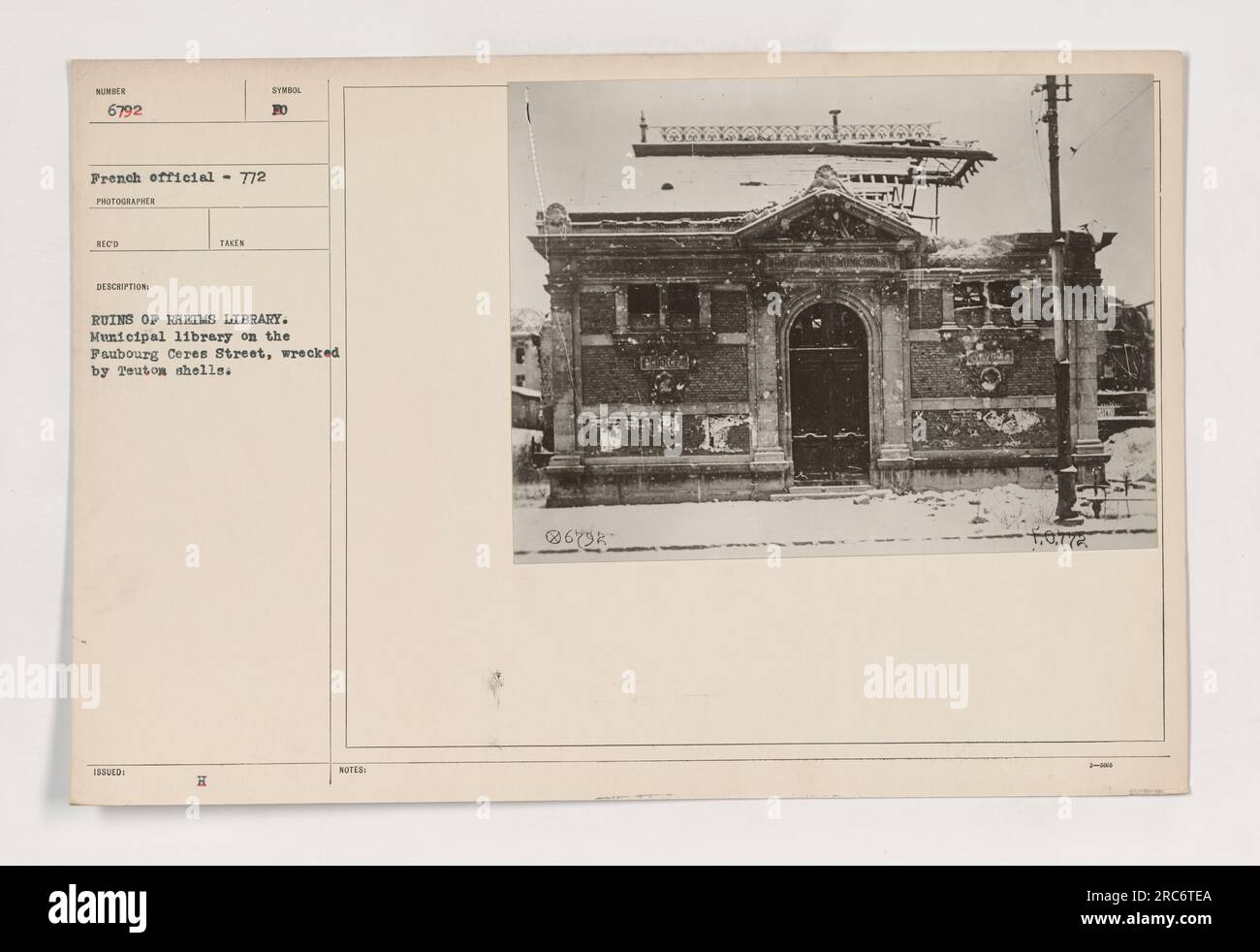 Ruins of the Rheims Library on Faubourg Ceres Street, destroyed by German artillery during World War I. This photograph, numbered 6792, was taken by a French official photographer. The library was a municipal building and suffered significant damage from enemy shells. This image is part of the collection 111-SC-6792 in the Photographs of American Military Activities during World War I series. Stock Photohttps://www.alamy.com/image-license-details/?v=1https://www.alamy.com/ruins-of-the-rheims-library-on-faubourg-ceres-street-destroyed-by-german-artillery-during-world-war-i-this-photograph-numbered-6792-was-taken-by-a-french-official-photographer-the-library-was-a-municipal-building-and-suffered-significant-damage-from-enemy-shells-this-image-is-part-of-the-collection-111-sc-6792-in-the-photographs-of-american-military-activities-during-world-war-i-series-image558258578.html
Ruins of the Rheims Library on Faubourg Ceres Street, destroyed by German artillery during World War I. This photograph, numbered 6792, was taken by a French official photographer. The library was a municipal building and suffered significant damage from enemy shells. This image is part of the collection 111-SC-6792 in the Photographs of American Military Activities during World War I series. Stock Photohttps://www.alamy.com/image-license-details/?v=1https://www.alamy.com/ruins-of-the-rheims-library-on-faubourg-ceres-street-destroyed-by-german-artillery-during-world-war-i-this-photograph-numbered-6792-was-taken-by-a-french-official-photographer-the-library-was-a-municipal-building-and-suffered-significant-damage-from-enemy-shells-this-image-is-part-of-the-collection-111-sc-6792-in-the-photographs-of-american-military-activities-during-world-war-i-series-image558258578.htmlRM2RC6TEA–Ruins of the Rheims Library on Faubourg Ceres Street, destroyed by German artillery during World War I. This photograph, numbered 6792, was taken by a French official photographer. The library was a municipal building and suffered significant damage from enemy shells. This image is part of the collection 111-SC-6792 in the Photographs of American Military Activities during World War I series.
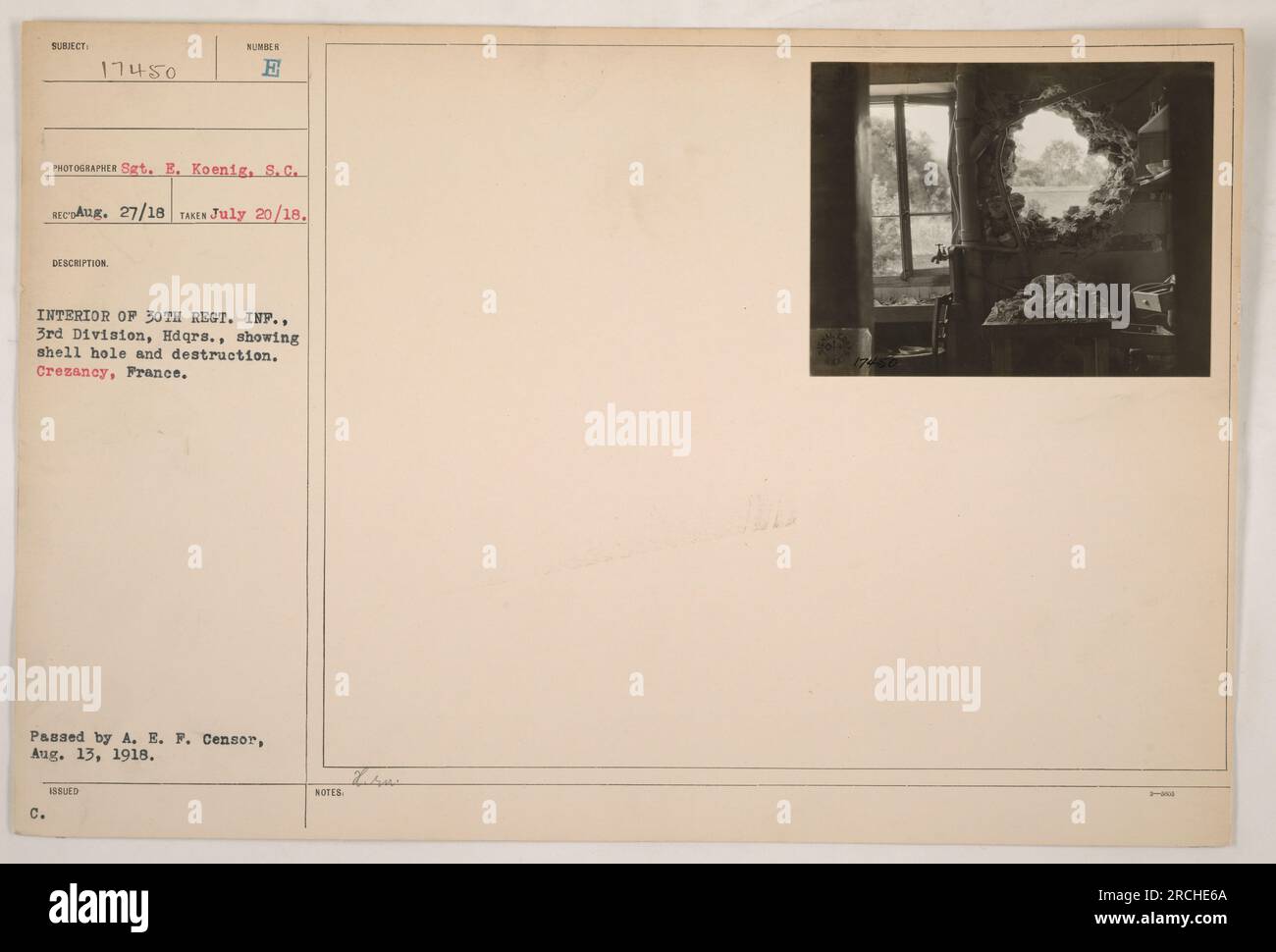 Interior of the 30th Regiment Infantry, 3rd Division, Headquarters, in Crezancy, France. The photograph shows the devastation caused by shell holes and destruction. Taken on July 20, 1918, by Sgt. E. Koenig. Approved by the A.E.F. censor on August 13, 1918. Stock Photohttps://www.alamy.com/image-license-details/?v=1https://www.alamy.com/interior-of-the-30th-regiment-infantry-3rd-division-headquarters-in-crezancy-france-the-photograph-shows-the-devastation-caused-by-shell-holes-and-destruction-taken-on-july-20-1918-by-sgt-e-koenig-approved-by-the-aef-censor-on-august-13-1918-image558491986.html
Interior of the 30th Regiment Infantry, 3rd Division, Headquarters, in Crezancy, France. The photograph shows the devastation caused by shell holes and destruction. Taken on July 20, 1918, by Sgt. E. Koenig. Approved by the A.E.F. censor on August 13, 1918. Stock Photohttps://www.alamy.com/image-license-details/?v=1https://www.alamy.com/interior-of-the-30th-regiment-infantry-3rd-division-headquarters-in-crezancy-france-the-photograph-shows-the-devastation-caused-by-shell-holes-and-destruction-taken-on-july-20-1918-by-sgt-e-koenig-approved-by-the-aef-censor-on-august-13-1918-image558491986.htmlRM2RCHE6A–Interior of the 30th Regiment Infantry, 3rd Division, Headquarters, in Crezancy, France. The photograph shows the devastation caused by shell holes and destruction. Taken on July 20, 1918, by Sgt. E. Koenig. Approved by the A.E.F. censor on August 13, 1918.
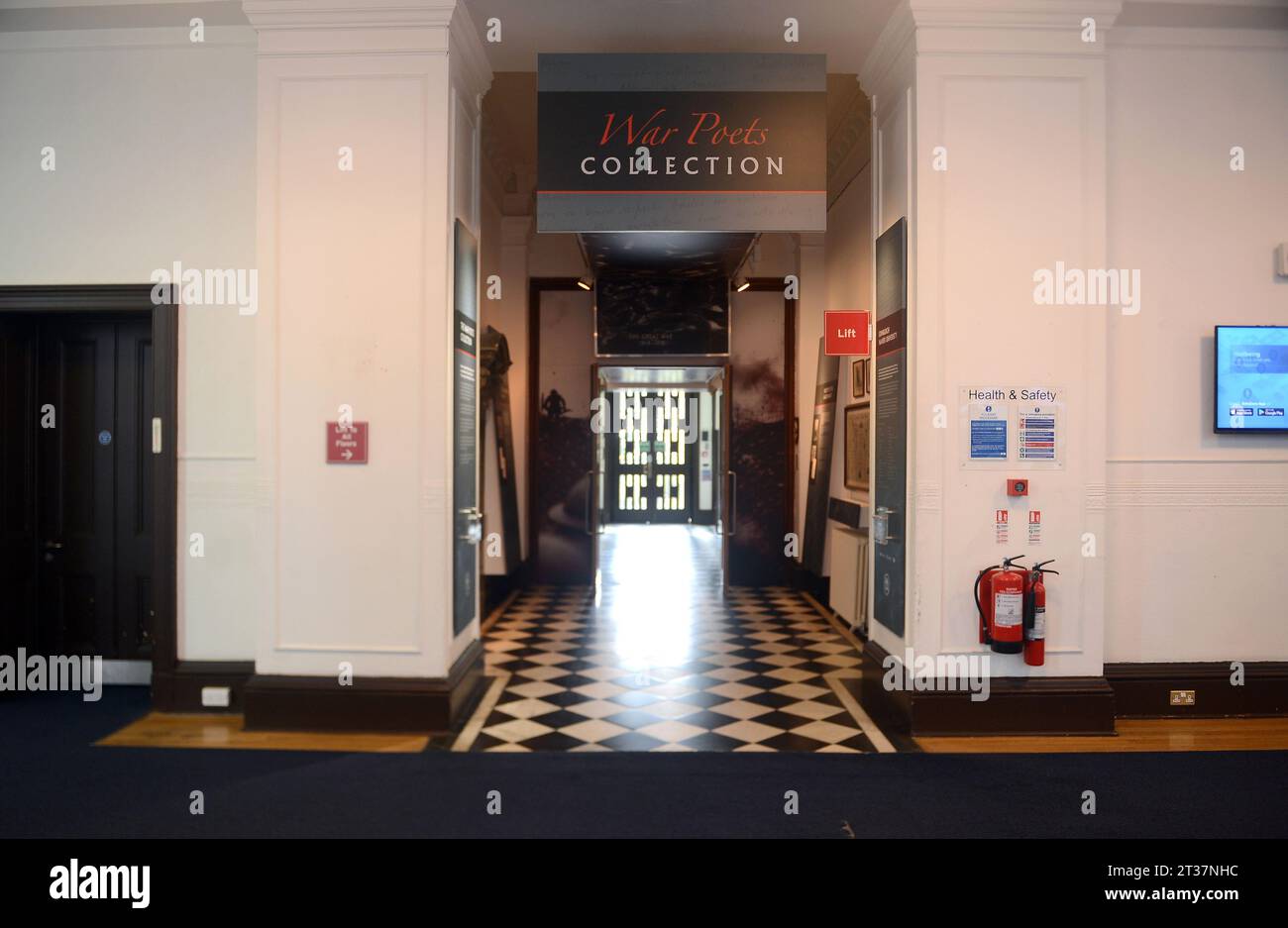 Edinburgh, Scotland, Great Britain. 2nd Oct, 2023. 20231002: The entrance to a special exhibition devoted to the British war poets that spent time receiving treatment for shell shock during the First World War is seen inside the historic Craiglockhart Hydropathic in Edinburgh, Scotland, Great Britain. (Credit Image: © Chuck Myers/ZUMA Press Wire) EDITORIAL USAGE ONLY! Not for Commercial USAGE! Stock Photohttps://www.alamy.com/image-license-details/?v=1https://www.alamy.com/edinburgh-scotland-great-britain-2nd-oct-2023-20231002-the-entrance-to-a-special-exhibition-devoted-to-the-british-war-poets-that-spent-time-receiving-treatment-for-shell-shock-during-the-first-world-war-is-seen-inside-the-historic-craiglockhart-hydropathic-in-edinburgh-scotland-great-britain-credit-image-chuck-myerszuma-press-wire-editorial-usage-only!-not-for-commercial-usage!-image569956728.html
Edinburgh, Scotland, Great Britain. 2nd Oct, 2023. 20231002: The entrance to a special exhibition devoted to the British war poets that spent time receiving treatment for shell shock during the First World War is seen inside the historic Craiglockhart Hydropathic in Edinburgh, Scotland, Great Britain. (Credit Image: © Chuck Myers/ZUMA Press Wire) EDITORIAL USAGE ONLY! Not for Commercial USAGE! Stock Photohttps://www.alamy.com/image-license-details/?v=1https://www.alamy.com/edinburgh-scotland-great-britain-2nd-oct-2023-20231002-the-entrance-to-a-special-exhibition-devoted-to-the-british-war-poets-that-spent-time-receiving-treatment-for-shell-shock-during-the-first-world-war-is-seen-inside-the-historic-craiglockhart-hydropathic-in-edinburgh-scotland-great-britain-credit-image-chuck-myerszuma-press-wire-editorial-usage-only!-not-for-commercial-usage!-image569956728.htmlRM2T37NHC–Edinburgh, Scotland, Great Britain. 2nd Oct, 2023. 20231002: The entrance to a special exhibition devoted to the British war poets that spent time receiving treatment for shell shock during the First World War is seen inside the historic Craiglockhart Hydropathic in Edinburgh, Scotland, Great Britain. (Credit Image: © Chuck Myers/ZUMA Press Wire) EDITORIAL USAGE ONLY! Not for Commercial USAGE!
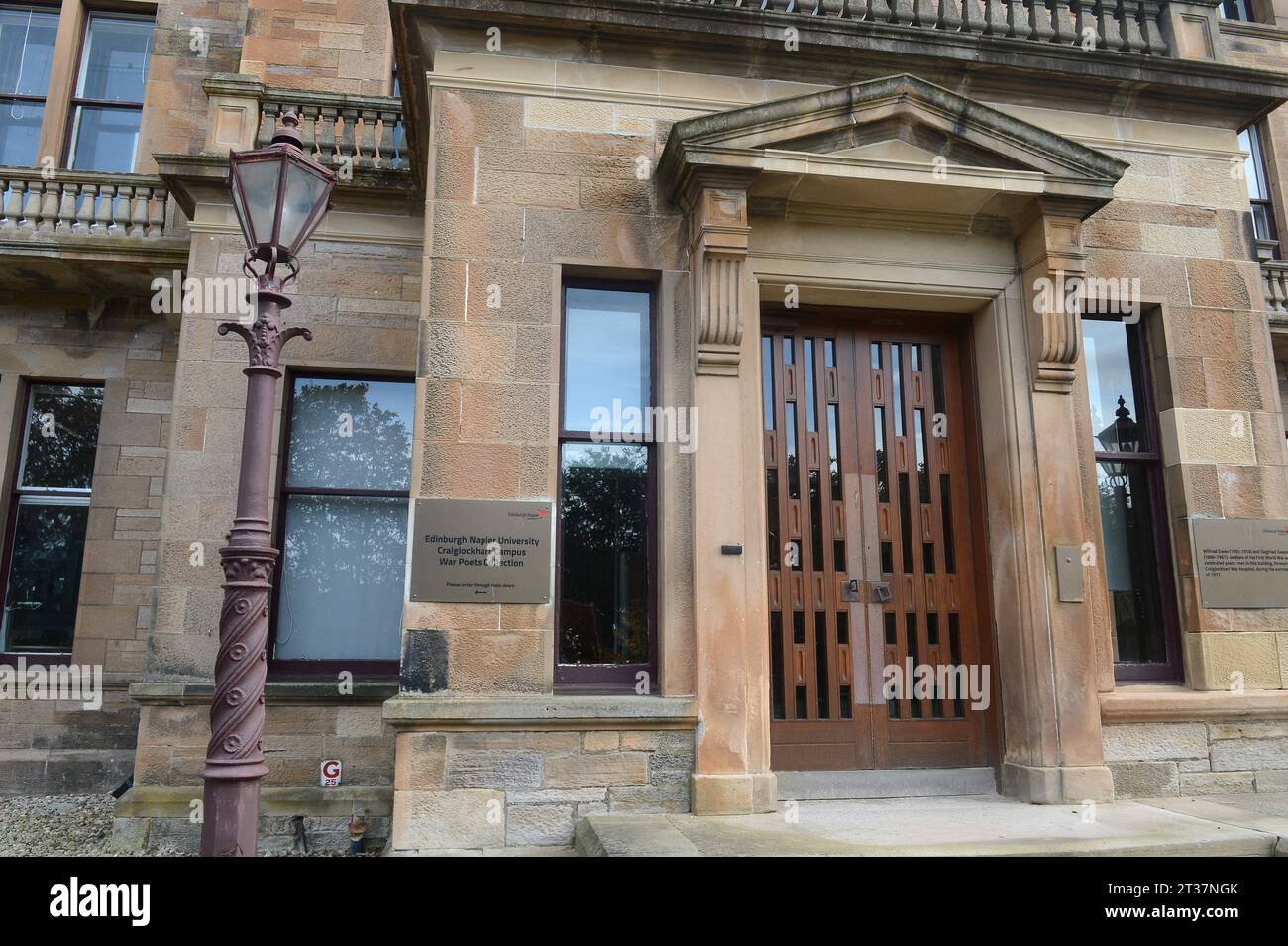 Edinburgh, Scotland, Great Britain. 2nd Oct, 2023. 20231002: The former entrance to the historic Craiglockhart Hydropathic today is seenl in Edinburgh, Scotland, Great Britain. During the First World War, Craiglockhart served as a hospital that served British officers suffering from shell shock. (Credit Image: © Chuck Myers/ZUMA Press Wire) EDITORIAL USAGE ONLY! Not for Commercial USAGE! Stock Photohttps://www.alamy.com/image-license-details/?v=1https://www.alamy.com/edinburgh-scotland-great-britain-2nd-oct-2023-20231002-the-former-entrance-to-the-historic-craiglockhart-hydropathic-today-is-seenl-in-edinburgh-scotland-great-britain-during-the-first-world-war-craiglockhart-served-as-a-hospital-that-served-british-officers-suffering-from-shell-shock-credit-image-chuck-myerszuma-press-wire-editorial-usage-only!-not-for-commercial-usage!-image569956707.html
Edinburgh, Scotland, Great Britain. 2nd Oct, 2023. 20231002: The former entrance to the historic Craiglockhart Hydropathic today is seenl in Edinburgh, Scotland, Great Britain. During the First World War, Craiglockhart served as a hospital that served British officers suffering from shell shock. (Credit Image: © Chuck Myers/ZUMA Press Wire) EDITORIAL USAGE ONLY! Not for Commercial USAGE! Stock Photohttps://www.alamy.com/image-license-details/?v=1https://www.alamy.com/edinburgh-scotland-great-britain-2nd-oct-2023-20231002-the-former-entrance-to-the-historic-craiglockhart-hydropathic-today-is-seenl-in-edinburgh-scotland-great-britain-during-the-first-world-war-craiglockhart-served-as-a-hospital-that-served-british-officers-suffering-from-shell-shock-credit-image-chuck-myerszuma-press-wire-editorial-usage-only!-not-for-commercial-usage!-image569956707.htmlRM2T37NGK–Edinburgh, Scotland, Great Britain. 2nd Oct, 2023. 20231002: The former entrance to the historic Craiglockhart Hydropathic today is seenl in Edinburgh, Scotland, Great Britain. During the First World War, Craiglockhart served as a hospital that served British officers suffering from shell shock. (Credit Image: © Chuck Myers/ZUMA Press Wire) EDITORIAL USAGE ONLY! Not for Commercial USAGE!
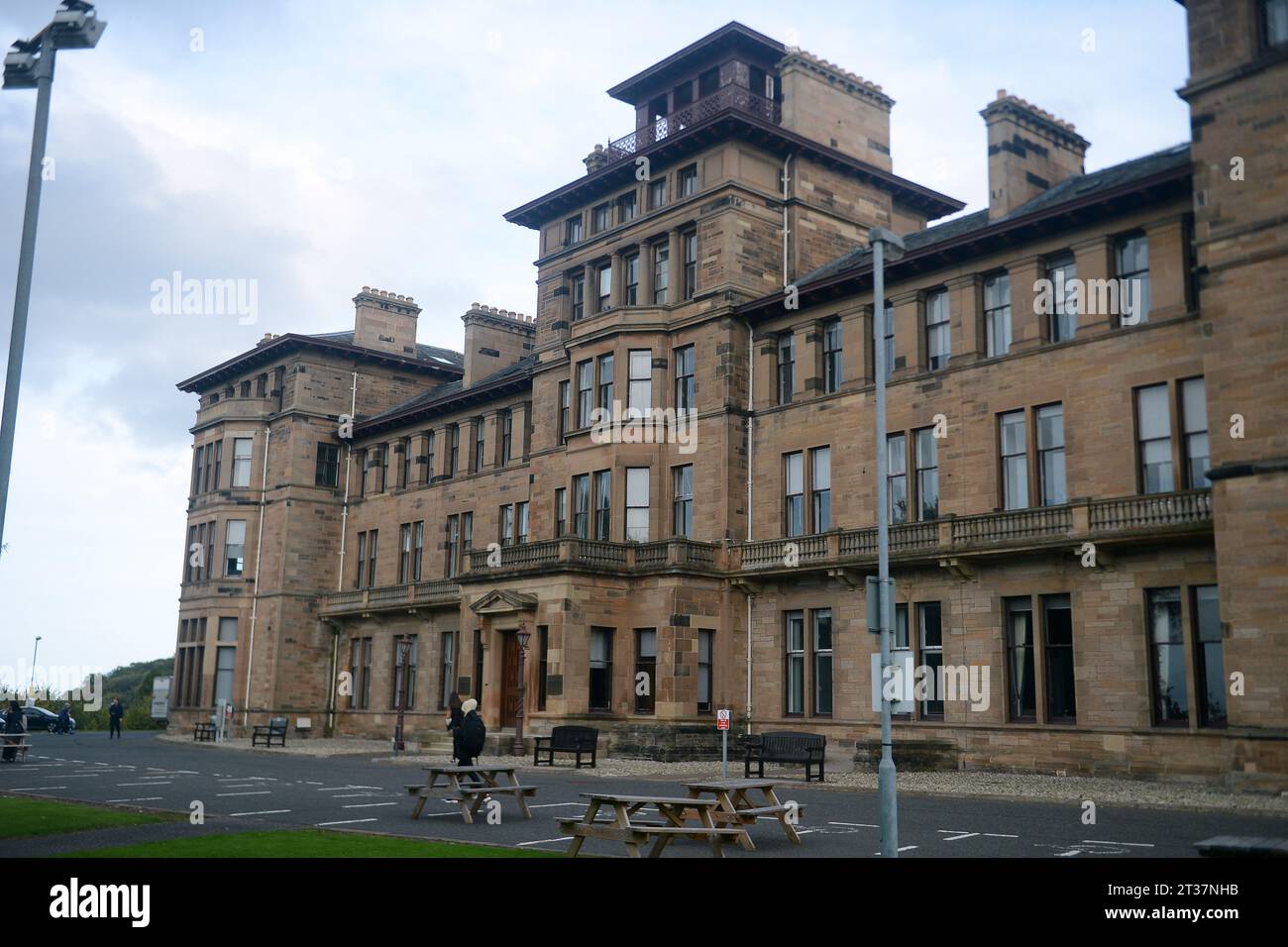 Edinburgh, Scotland, Great Britain. 2nd Oct, 2023. 20231002: The historic Craiglockhart Hydropathic today is home of the Edinburgh Napier University business school in Edinburgh, Scotland, Great Britain. During the First World War, Craiglockhart served as a hospital that served British officers suffering from shell shock. (Credit Image: © Chuck Myers/ZUMA Press Wire) EDITORIAL USAGE ONLY! Not for Commercial USAGE! Stock Photohttps://www.alamy.com/image-license-details/?v=1https://www.alamy.com/edinburgh-scotland-great-britain-2nd-oct-2023-20231002-the-historic-craiglockhart-hydropathic-today-is-home-of-the-edinburgh-napier-university-business-school-in-edinburgh-scotland-great-britain-during-the-first-world-war-craiglockhart-served-as-a-hospital-that-served-british-officers-suffering-from-shell-shock-credit-image-chuck-myerszuma-press-wire-editorial-usage-only!-not-for-commercial-usage!-image569956727.html
Edinburgh, Scotland, Great Britain. 2nd Oct, 2023. 20231002: The historic Craiglockhart Hydropathic today is home of the Edinburgh Napier University business school in Edinburgh, Scotland, Great Britain. During the First World War, Craiglockhart served as a hospital that served British officers suffering from shell shock. (Credit Image: © Chuck Myers/ZUMA Press Wire) EDITORIAL USAGE ONLY! Not for Commercial USAGE! Stock Photohttps://www.alamy.com/image-license-details/?v=1https://www.alamy.com/edinburgh-scotland-great-britain-2nd-oct-2023-20231002-the-historic-craiglockhart-hydropathic-today-is-home-of-the-edinburgh-napier-university-business-school-in-edinburgh-scotland-great-britain-during-the-first-world-war-craiglockhart-served-as-a-hospital-that-served-british-officers-suffering-from-shell-shock-credit-image-chuck-myerszuma-press-wire-editorial-usage-only!-not-for-commercial-usage!-image569956727.htmlRM2T37NHB–Edinburgh, Scotland, Great Britain. 2nd Oct, 2023. 20231002: The historic Craiglockhart Hydropathic today is home of the Edinburgh Napier University business school in Edinburgh, Scotland, Great Britain. During the First World War, Craiglockhart served as a hospital that served British officers suffering from shell shock. (Credit Image: © Chuck Myers/ZUMA Press Wire) EDITORIAL USAGE ONLY! Not for Commercial USAGE!
 Edinburgh, Scotland, Great Britain. 2nd Oct, 2023. 20231002: The historic Craiglockhart Hydropathic is today the home of the Edinburgh Napier University business school in Edinburgh, Scotland, Great Britain. During the First World War, Craiglockhart served as a hospital for British officers suffering from shell shock. (Credit Image: © Chuck Myers/ZUMA Press Wire) EDITORIAL USAGE ONLY! Not for Commercial USAGE! Stock Photohttps://www.alamy.com/image-license-details/?v=1https://www.alamy.com/edinburgh-scotland-great-britain-2nd-oct-2023-20231002-the-historic-craiglockhart-hydropathic-is-today-the-home-of-the-edinburgh-napier-university-business-school-in-edinburgh-scotland-great-britain-during-the-first-world-war-craiglockhart-served-as-a-hospital-for-british-officers-suffering-from-shell-shock-credit-image-chuck-myerszuma-press-wire-editorial-usage-only!-not-for-commercial-usage!-image569956684.html
Edinburgh, Scotland, Great Britain. 2nd Oct, 2023. 20231002: The historic Craiglockhart Hydropathic is today the home of the Edinburgh Napier University business school in Edinburgh, Scotland, Great Britain. During the First World War, Craiglockhart served as a hospital for British officers suffering from shell shock. (Credit Image: © Chuck Myers/ZUMA Press Wire) EDITORIAL USAGE ONLY! Not for Commercial USAGE! Stock Photohttps://www.alamy.com/image-license-details/?v=1https://www.alamy.com/edinburgh-scotland-great-britain-2nd-oct-2023-20231002-the-historic-craiglockhart-hydropathic-is-today-the-home-of-the-edinburgh-napier-university-business-school-in-edinburgh-scotland-great-britain-during-the-first-world-war-craiglockhart-served-as-a-hospital-for-british-officers-suffering-from-shell-shock-credit-image-chuck-myerszuma-press-wire-editorial-usage-only!-not-for-commercial-usage!-image569956684.htmlRM2T37NFT–Edinburgh, Scotland, Great Britain. 2nd Oct, 2023. 20231002: The historic Craiglockhart Hydropathic is today the home of the Edinburgh Napier University business school in Edinburgh, Scotland, Great Britain. During the First World War, Craiglockhart served as a hospital for British officers suffering from shell shock. (Credit Image: © Chuck Myers/ZUMA Press Wire) EDITORIAL USAGE ONLY! Not for Commercial USAGE!
 Edinburgh, Scotland, Great Britain. 2nd Oct, 2023. 20231002: The historic Craiglockhart Hydropathic today is today home of the Edinburgh Napier University business school in Edinburgh, Scotland, Great Britain. During the First World War, Craiglockhart served as a hospital for British officers suffering from shell shock. (Credit Image: © Chuck Myers/ZUMA Press Wire) EDITORIAL USAGE ONLY! Not for Commercial USAGE! Stock Photohttps://www.alamy.com/image-license-details/?v=1https://www.alamy.com/edinburgh-scotland-great-britain-2nd-oct-2023-20231002-the-historic-craiglockhart-hydropathic-today-is-today-home-of-the-edinburgh-napier-university-business-school-in-edinburgh-scotland-great-britain-during-the-first-world-war-craiglockhart-served-as-a-hospital-for-british-officers-suffering-from-shell-shock-credit-image-chuck-myerszuma-press-wire-editorial-usage-only!-not-for-commercial-usage!-image569956733.html
Edinburgh, Scotland, Great Britain. 2nd Oct, 2023. 20231002: The historic Craiglockhart Hydropathic today is today home of the Edinburgh Napier University business school in Edinburgh, Scotland, Great Britain. During the First World War, Craiglockhart served as a hospital for British officers suffering from shell shock. (Credit Image: © Chuck Myers/ZUMA Press Wire) EDITORIAL USAGE ONLY! Not for Commercial USAGE! Stock Photohttps://www.alamy.com/image-license-details/?v=1https://www.alamy.com/edinburgh-scotland-great-britain-2nd-oct-2023-20231002-the-historic-craiglockhart-hydropathic-today-is-today-home-of-the-edinburgh-napier-university-business-school-in-edinburgh-scotland-great-britain-during-the-first-world-war-craiglockhart-served-as-a-hospital-for-british-officers-suffering-from-shell-shock-credit-image-chuck-myerszuma-press-wire-editorial-usage-only!-not-for-commercial-usage!-image569956733.htmlRM2T37NHH–Edinburgh, Scotland, Great Britain. 2nd Oct, 2023. 20231002: The historic Craiglockhart Hydropathic today is today home of the Edinburgh Napier University business school in Edinburgh, Scotland, Great Britain. During the First World War, Craiglockhart served as a hospital for British officers suffering from shell shock. (Credit Image: © Chuck Myers/ZUMA Press Wire) EDITORIAL USAGE ONLY! Not for Commercial USAGE!
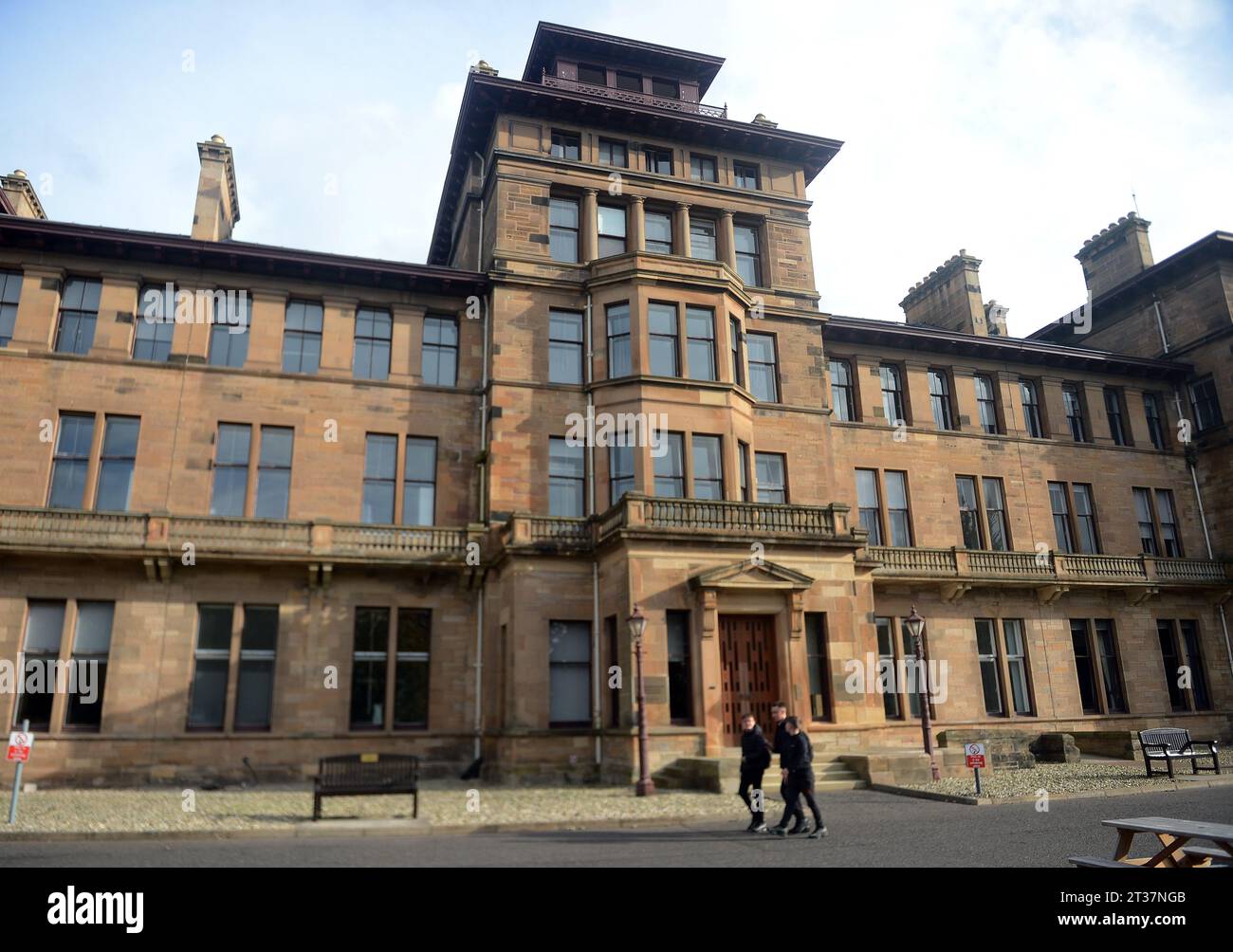 Edinburgh, Scotland, Great Britain. 2nd Oct, 2023. 20231002: The historic Craiglockhart Hydropathic is today the home of the Edinburgh Napier University business school in Edinburgh, Scotland, Great Britain. During the First World War, Craiglockhart served as a hospital for British officers suffering from shell shock. (Credit Image: © Chuck Myers/ZUMA Press Wire) EDITORIAL USAGE ONLY! Not for Commercial USAGE! Stock Photohttps://www.alamy.com/image-license-details/?v=1https://www.alamy.com/edinburgh-scotland-great-britain-2nd-oct-2023-20231002-the-historic-craiglockhart-hydropathic-is-today-the-home-of-the-edinburgh-napier-university-business-school-in-edinburgh-scotland-great-britain-during-the-first-world-war-craiglockhart-served-as-a-hospital-for-british-officers-suffering-from-shell-shock-credit-image-chuck-myerszuma-press-wire-editorial-usage-only!-not-for-commercial-usage!-image569956699.html
Edinburgh, Scotland, Great Britain. 2nd Oct, 2023. 20231002: The historic Craiglockhart Hydropathic is today the home of the Edinburgh Napier University business school in Edinburgh, Scotland, Great Britain. During the First World War, Craiglockhart served as a hospital for British officers suffering from shell shock. (Credit Image: © Chuck Myers/ZUMA Press Wire) EDITORIAL USAGE ONLY! Not for Commercial USAGE! Stock Photohttps://www.alamy.com/image-license-details/?v=1https://www.alamy.com/edinburgh-scotland-great-britain-2nd-oct-2023-20231002-the-historic-craiglockhart-hydropathic-is-today-the-home-of-the-edinburgh-napier-university-business-school-in-edinburgh-scotland-great-britain-during-the-first-world-war-craiglockhart-served-as-a-hospital-for-british-officers-suffering-from-shell-shock-credit-image-chuck-myerszuma-press-wire-editorial-usage-only!-not-for-commercial-usage!-image569956699.htmlRM2T37NGB–Edinburgh, Scotland, Great Britain. 2nd Oct, 2023. 20231002: The historic Craiglockhart Hydropathic is today the home of the Edinburgh Napier University business school in Edinburgh, Scotland, Great Britain. During the First World War, Craiglockhart served as a hospital for British officers suffering from shell shock. (Credit Image: © Chuck Myers/ZUMA Press Wire) EDITORIAL USAGE ONLY! Not for Commercial USAGE!
 Edinburgh, Scotland, Great Britain. 2nd Oct, 2023. 20231002: The historic Craiglockhart Hydropathic is today the home of the Edinburgh Napier University business school in Edinburgh, Scotland, Great Britain. During the First World War, Craiglockhart served as a hospital for British officers suffering from shell shock. (Credit Image: © Chuck Myers/ZUMA Press Wire) EDITORIAL USAGE ONLY! Not for Commercial USAGE! Stock Photohttps://www.alamy.com/image-license-details/?v=1https://www.alamy.com/edinburgh-scotland-great-britain-2nd-oct-2023-20231002-the-historic-craiglockhart-hydropathic-is-today-the-home-of-the-edinburgh-napier-university-business-school-in-edinburgh-scotland-great-britain-during-the-first-world-war-craiglockhart-served-as-a-hospital-for-british-officers-suffering-from-shell-shock-credit-image-chuck-myerszuma-press-wire-editorial-usage-only!-not-for-commercial-usage!-image569956711.html
Edinburgh, Scotland, Great Britain. 2nd Oct, 2023. 20231002: The historic Craiglockhart Hydropathic is today the home of the Edinburgh Napier University business school in Edinburgh, Scotland, Great Britain. During the First World War, Craiglockhart served as a hospital for British officers suffering from shell shock. (Credit Image: © Chuck Myers/ZUMA Press Wire) EDITORIAL USAGE ONLY! Not for Commercial USAGE! Stock Photohttps://www.alamy.com/image-license-details/?v=1https://www.alamy.com/edinburgh-scotland-great-britain-2nd-oct-2023-20231002-the-historic-craiglockhart-hydropathic-is-today-the-home-of-the-edinburgh-napier-university-business-school-in-edinburgh-scotland-great-britain-during-the-first-world-war-craiglockhart-served-as-a-hospital-for-british-officers-suffering-from-shell-shock-credit-image-chuck-myerszuma-press-wire-editorial-usage-only!-not-for-commercial-usage!-image569956711.htmlRM2T37NGR–Edinburgh, Scotland, Great Britain. 2nd Oct, 2023. 20231002: The historic Craiglockhart Hydropathic is today the home of the Edinburgh Napier University business school in Edinburgh, Scotland, Great Britain. During the First World War, Craiglockhart served as a hospital for British officers suffering from shell shock. (Credit Image: © Chuck Myers/ZUMA Press Wire) EDITORIAL USAGE ONLY! Not for Commercial USAGE!
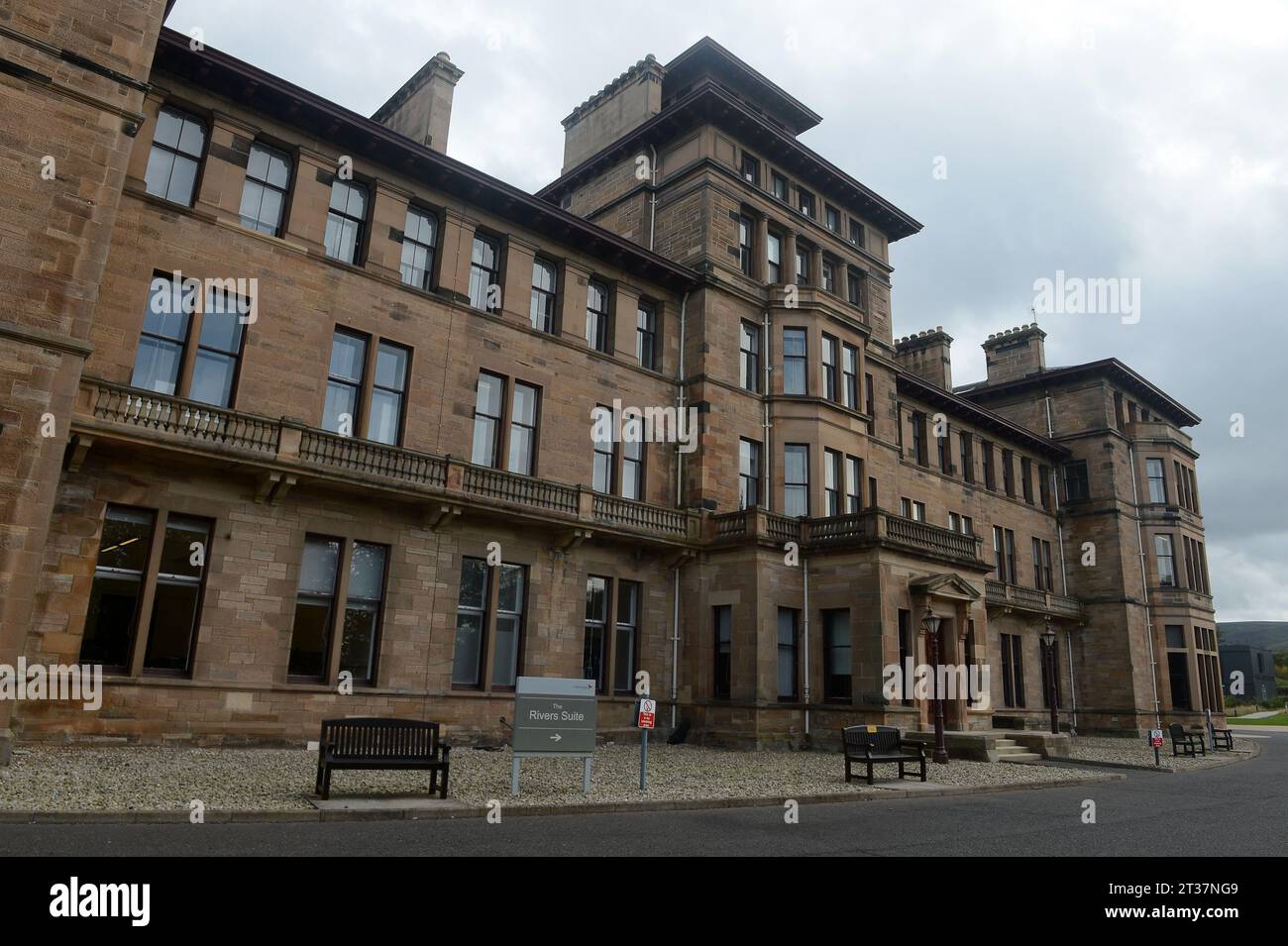 Edinburgh, Scotland, Great Britain. 2nd Oct, 2023. 20231002: The historic Craiglockhart Hydropathic is today the home of the Edinburgh Napier University business school in Edinburgh, Scotland, Great Britain. During the First World War, Craiglockhart served as a hospital for British officers suffering from shell shock. (Credit Image: © Chuck Myers/ZUMA Press Wire) EDITORIAL USAGE ONLY! Not for Commercial USAGE! Stock Photohttps://www.alamy.com/image-license-details/?v=1https://www.alamy.com/edinburgh-scotland-great-britain-2nd-oct-2023-20231002-the-historic-craiglockhart-hydropathic-is-today-the-home-of-the-edinburgh-napier-university-business-school-in-edinburgh-scotland-great-britain-during-the-first-world-war-craiglockhart-served-as-a-hospital-for-british-officers-suffering-from-shell-shock-credit-image-chuck-myerszuma-press-wire-editorial-usage-only!-not-for-commercial-usage!-image569956697.html
Edinburgh, Scotland, Great Britain. 2nd Oct, 2023. 20231002: The historic Craiglockhart Hydropathic is today the home of the Edinburgh Napier University business school in Edinburgh, Scotland, Great Britain. During the First World War, Craiglockhart served as a hospital for British officers suffering from shell shock. (Credit Image: © Chuck Myers/ZUMA Press Wire) EDITORIAL USAGE ONLY! Not for Commercial USAGE! Stock Photohttps://www.alamy.com/image-license-details/?v=1https://www.alamy.com/edinburgh-scotland-great-britain-2nd-oct-2023-20231002-the-historic-craiglockhart-hydropathic-is-today-the-home-of-the-edinburgh-napier-university-business-school-in-edinburgh-scotland-great-britain-during-the-first-world-war-craiglockhart-served-as-a-hospital-for-british-officers-suffering-from-shell-shock-credit-image-chuck-myerszuma-press-wire-editorial-usage-only!-not-for-commercial-usage!-image569956697.htmlRM2T37NG9–Edinburgh, Scotland, Great Britain. 2nd Oct, 2023. 20231002: The historic Craiglockhart Hydropathic is today the home of the Edinburgh Napier University business school in Edinburgh, Scotland, Great Britain. During the First World War, Craiglockhart served as a hospital for British officers suffering from shell shock. (Credit Image: © Chuck Myers/ZUMA Press Wire) EDITORIAL USAGE ONLY! Not for Commercial USAGE!
 Edinburgh, Scotland, Great Britain. 2nd Oct, 2023. 20231002: The historic Craiglockhart Hydropathic is today the home of the Edinburgh Napier University business school in Edinburgh, Scotland, Great Britain. During the First World War, Craiglockhart served as a hospital for British officers suffering from shell shock. (Credit Image: © Chuck Myers/ZUMA Press Wire) EDITORIAL USAGE ONLY! Not for Commercial USAGE! Stock Photohttps://www.alamy.com/image-license-details/?v=1https://www.alamy.com/edinburgh-scotland-great-britain-2nd-oct-2023-20231002-the-historic-craiglockhart-hydropathic-is-today-the-home-of-the-edinburgh-napier-university-business-school-in-edinburgh-scotland-great-britain-during-the-first-world-war-craiglockhart-served-as-a-hospital-for-british-officers-suffering-from-shell-shock-credit-image-chuck-myerszuma-press-wire-editorial-usage-only!-not-for-commercial-usage!-image569956689.html
Edinburgh, Scotland, Great Britain. 2nd Oct, 2023. 20231002: The historic Craiglockhart Hydropathic is today the home of the Edinburgh Napier University business school in Edinburgh, Scotland, Great Britain. During the First World War, Craiglockhart served as a hospital for British officers suffering from shell shock. (Credit Image: © Chuck Myers/ZUMA Press Wire) EDITORIAL USAGE ONLY! Not for Commercial USAGE! Stock Photohttps://www.alamy.com/image-license-details/?v=1https://www.alamy.com/edinburgh-scotland-great-britain-2nd-oct-2023-20231002-the-historic-craiglockhart-hydropathic-is-today-the-home-of-the-edinburgh-napier-university-business-school-in-edinburgh-scotland-great-britain-during-the-first-world-war-craiglockhart-served-as-a-hospital-for-british-officers-suffering-from-shell-shock-credit-image-chuck-myerszuma-press-wire-editorial-usage-only!-not-for-commercial-usage!-image569956689.htmlRM2T37NG1–Edinburgh, Scotland, Great Britain. 2nd Oct, 2023. 20231002: The historic Craiglockhart Hydropathic is today the home of the Edinburgh Napier University business school in Edinburgh, Scotland, Great Britain. During the First World War, Craiglockhart served as a hospital for British officers suffering from shell shock. (Credit Image: © Chuck Myers/ZUMA Press Wire) EDITORIAL USAGE ONLY! Not for Commercial USAGE!
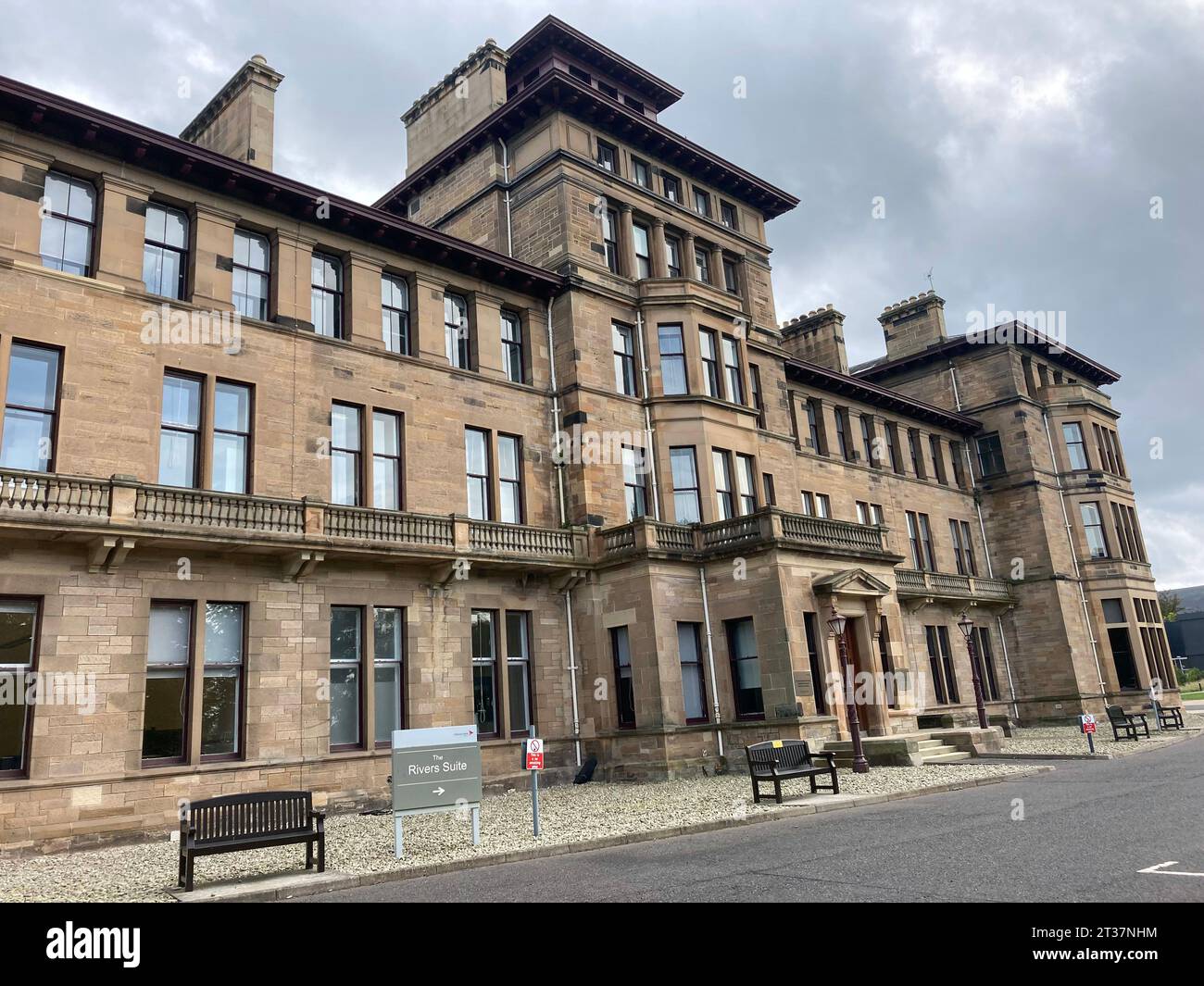 Edinburgh, Scotland, Great Britain. 2nd Oct, 2023. 20231002: The historic Craiglockhart Hydropathic today is home of the Edinburgh Napier University business school in Edinburgh, Scotland, Great Britain. During the First World War, Craiglockhart served as a hospital that served British officers suffering from shell shock. (Credit Image: © Chuck Myers/ZUMA Press Wire) EDITORIAL USAGE ONLY! Not for Commercial USAGE! Stock Photohttps://www.alamy.com/image-license-details/?v=1https://www.alamy.com/edinburgh-scotland-great-britain-2nd-oct-2023-20231002-the-historic-craiglockhart-hydropathic-today-is-home-of-the-edinburgh-napier-university-business-school-in-edinburgh-scotland-great-britain-during-the-first-world-war-craiglockhart-served-as-a-hospital-that-served-british-officers-suffering-from-shell-shock-credit-image-chuck-myerszuma-press-wire-editorial-usage-only!-not-for-commercial-usage!-image569956736.html
Edinburgh, Scotland, Great Britain. 2nd Oct, 2023. 20231002: The historic Craiglockhart Hydropathic today is home of the Edinburgh Napier University business school in Edinburgh, Scotland, Great Britain. During the First World War, Craiglockhart served as a hospital that served British officers suffering from shell shock. (Credit Image: © Chuck Myers/ZUMA Press Wire) EDITORIAL USAGE ONLY! Not for Commercial USAGE! Stock Photohttps://www.alamy.com/image-license-details/?v=1https://www.alamy.com/edinburgh-scotland-great-britain-2nd-oct-2023-20231002-the-historic-craiglockhart-hydropathic-today-is-home-of-the-edinburgh-napier-university-business-school-in-edinburgh-scotland-great-britain-during-the-first-world-war-craiglockhart-served-as-a-hospital-that-served-british-officers-suffering-from-shell-shock-credit-image-chuck-myerszuma-press-wire-editorial-usage-only!-not-for-commercial-usage!-image569956736.htmlRM2T37NHM–Edinburgh, Scotland, Great Britain. 2nd Oct, 2023. 20231002: The historic Craiglockhart Hydropathic today is home of the Edinburgh Napier University business school in Edinburgh, Scotland, Great Britain. During the First World War, Craiglockhart served as a hospital that served British officers suffering from shell shock. (Credit Image: © Chuck Myers/ZUMA Press Wire) EDITORIAL USAGE ONLY! Not for Commercial USAGE!